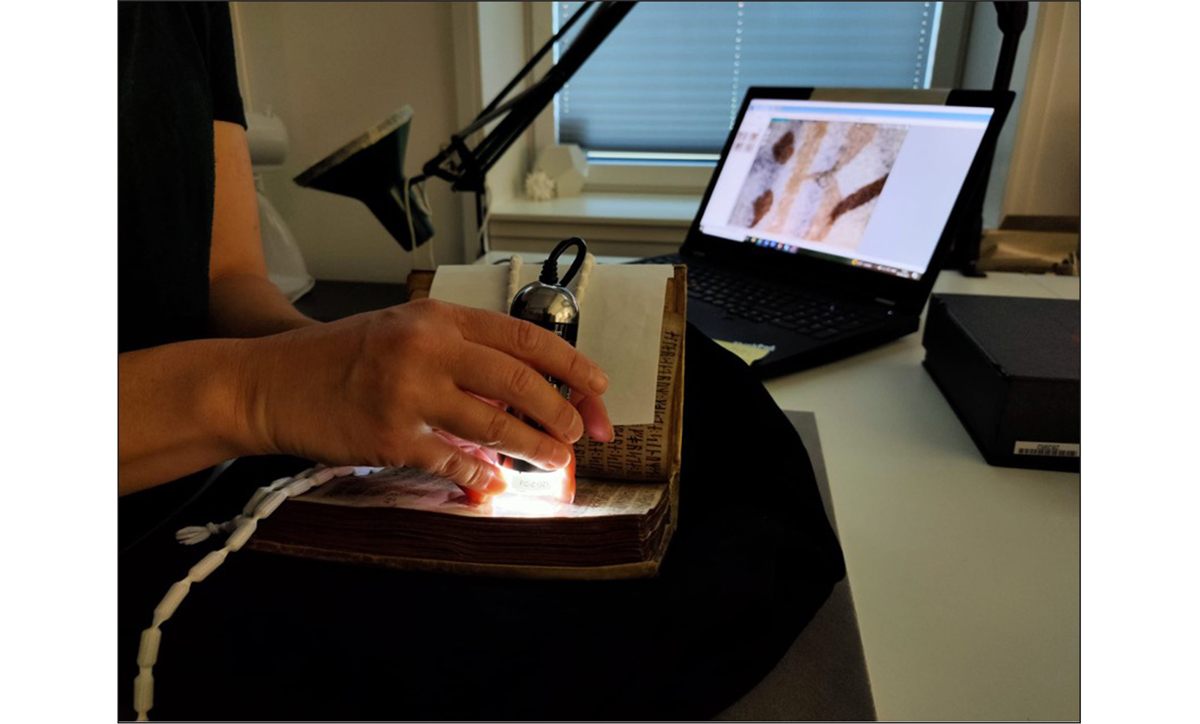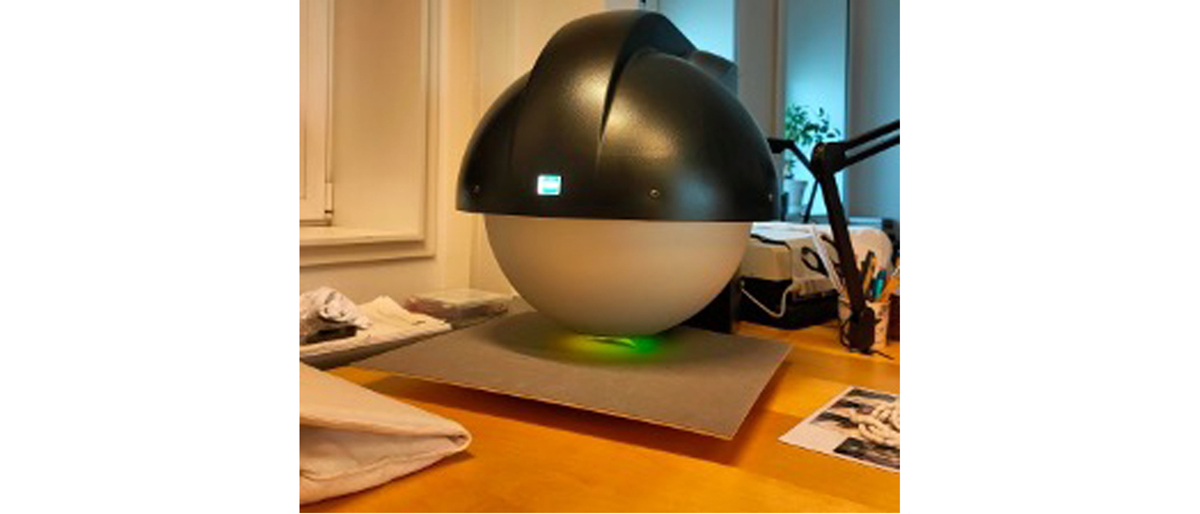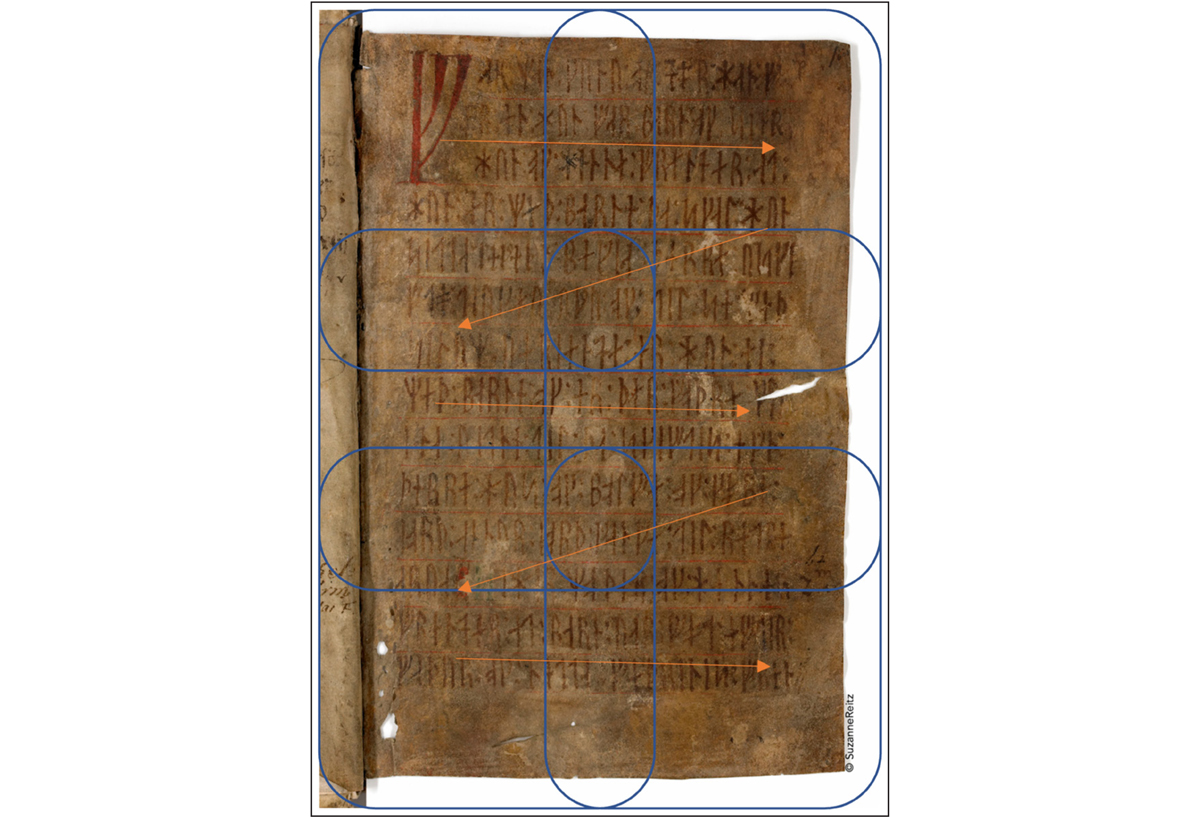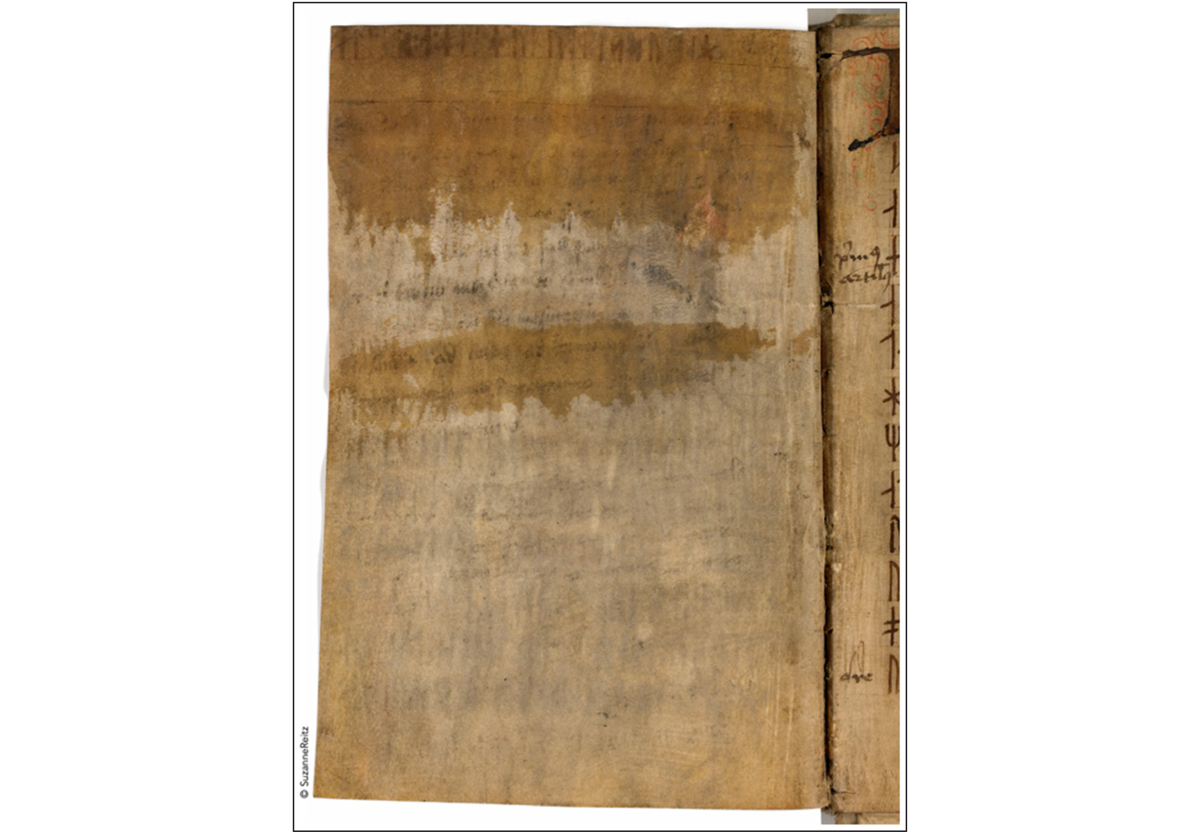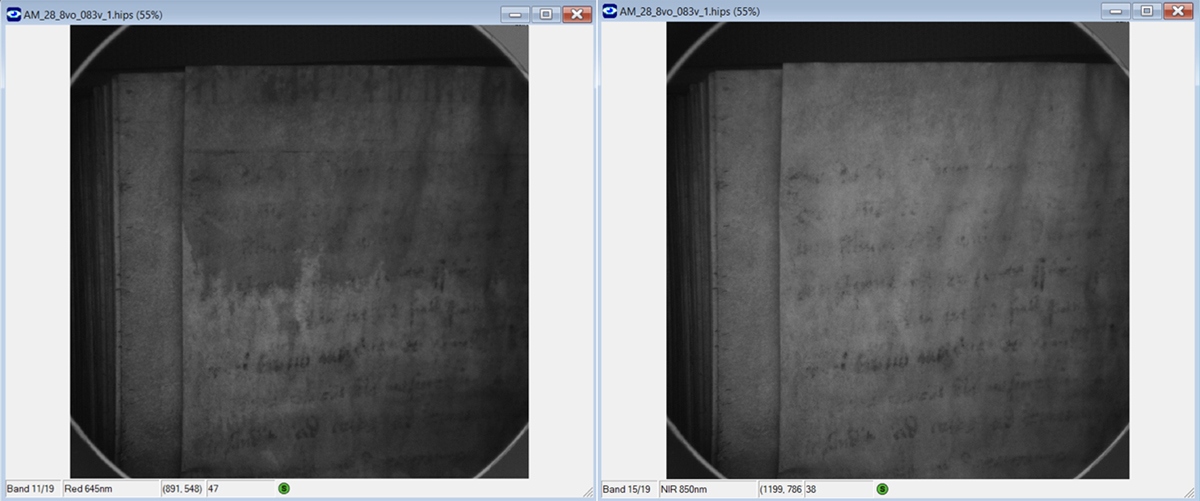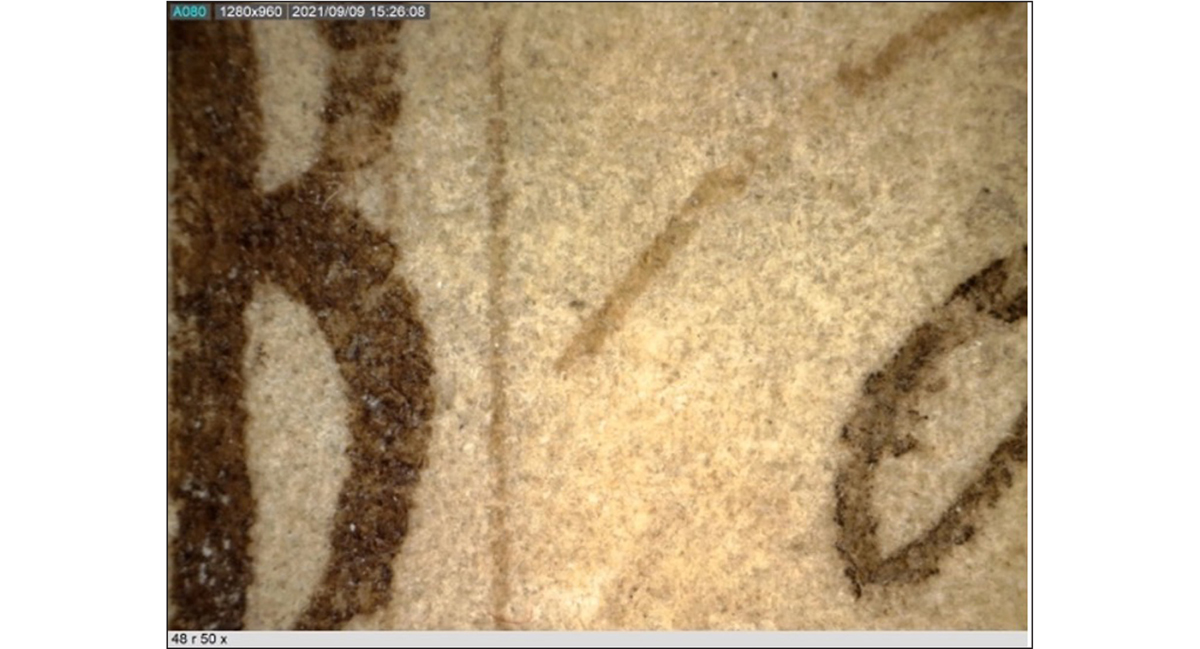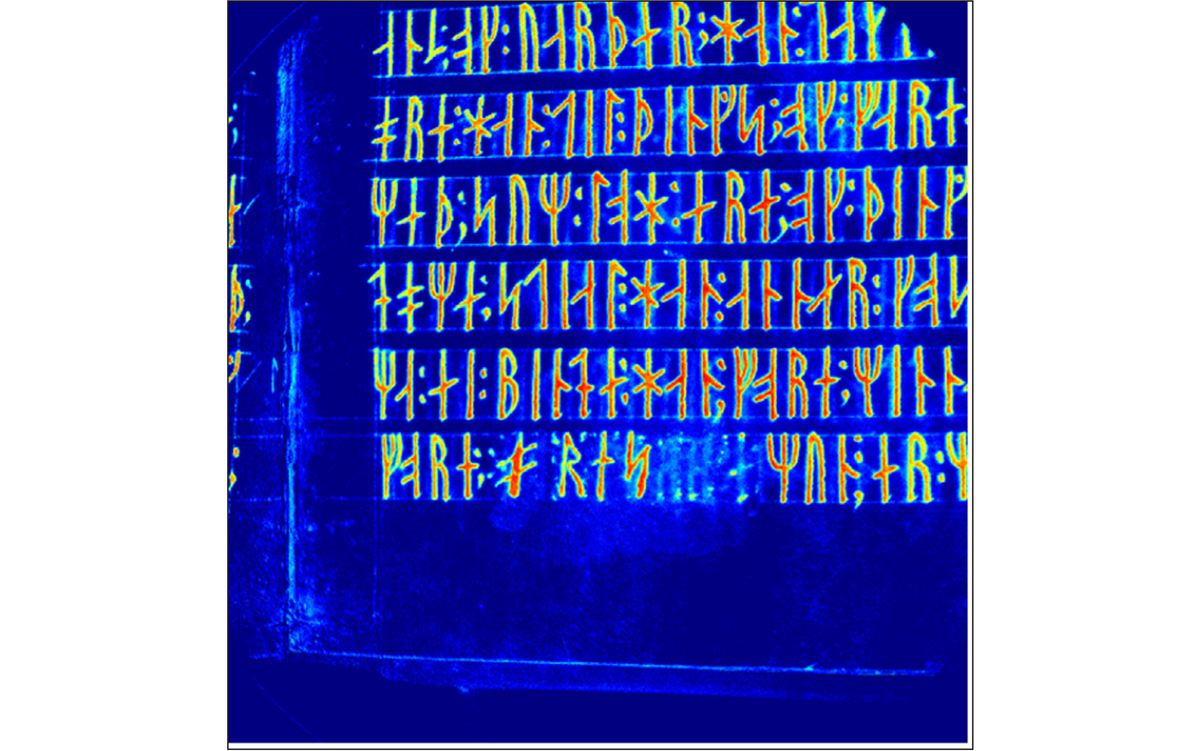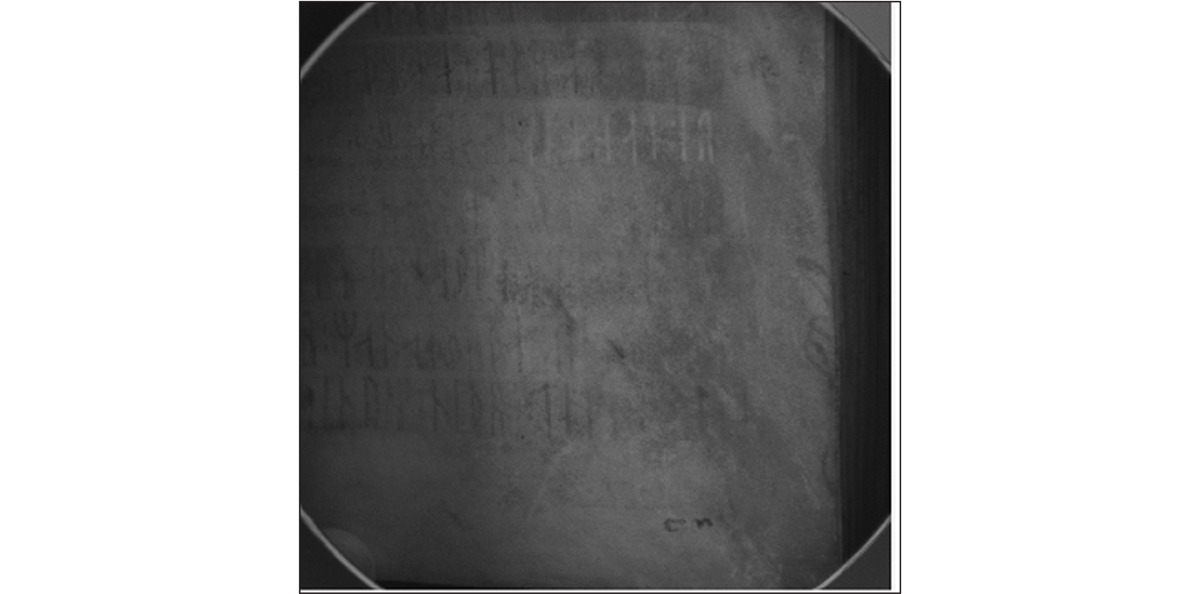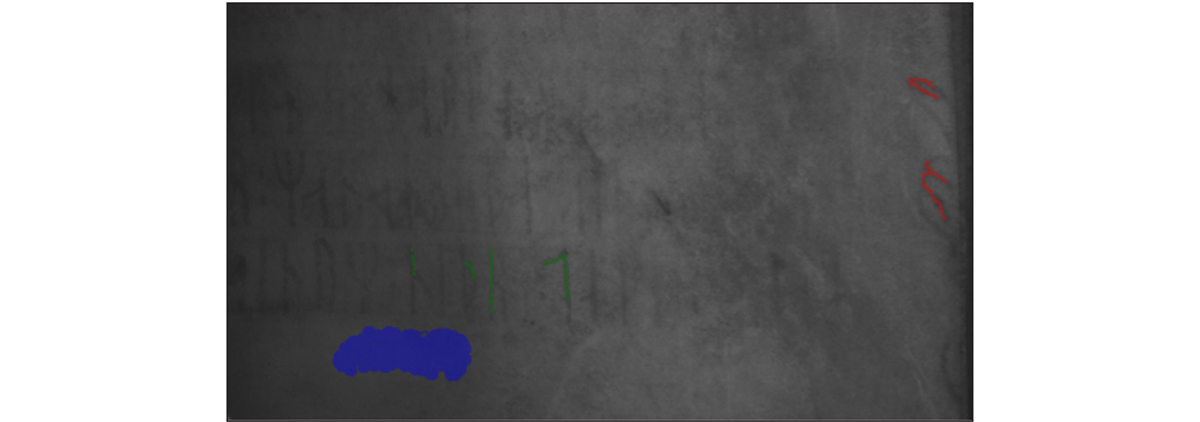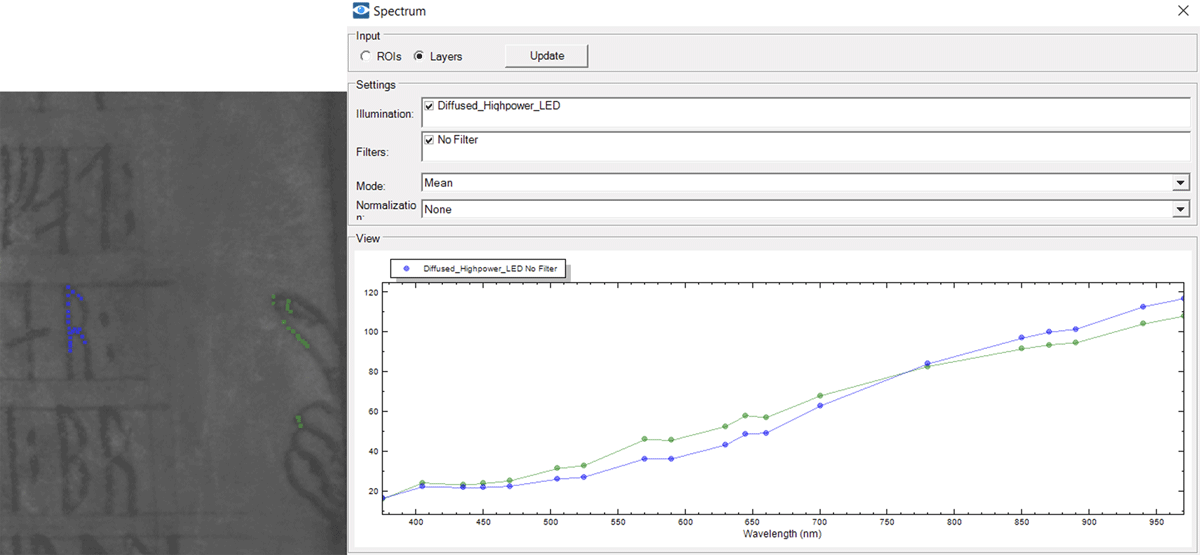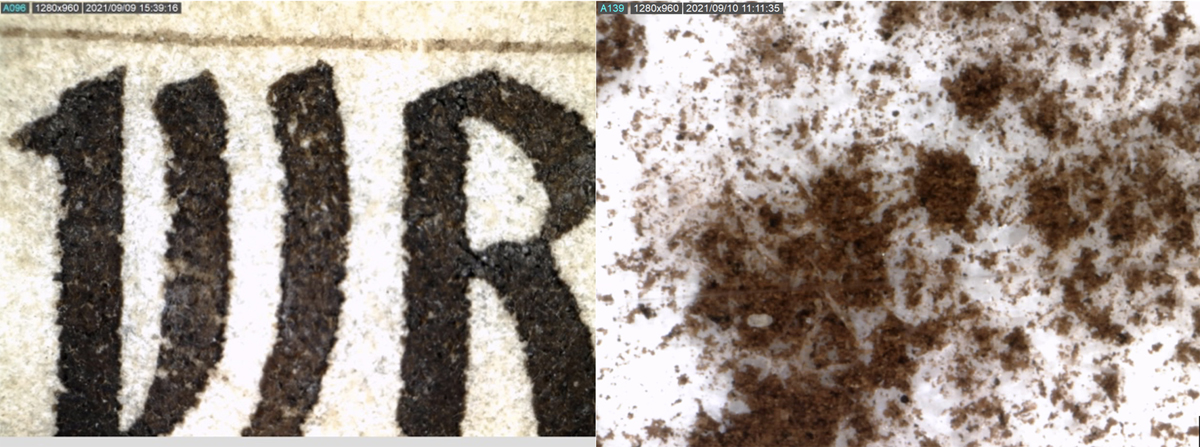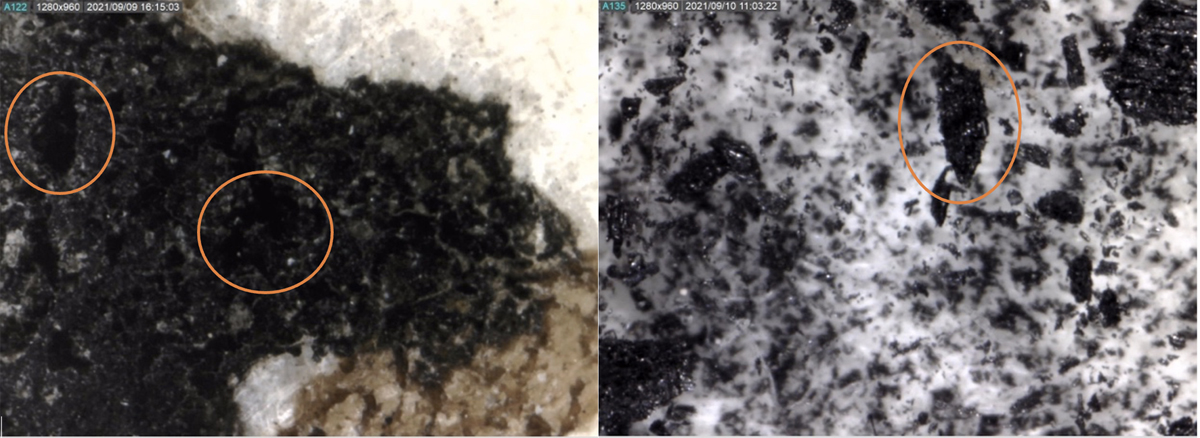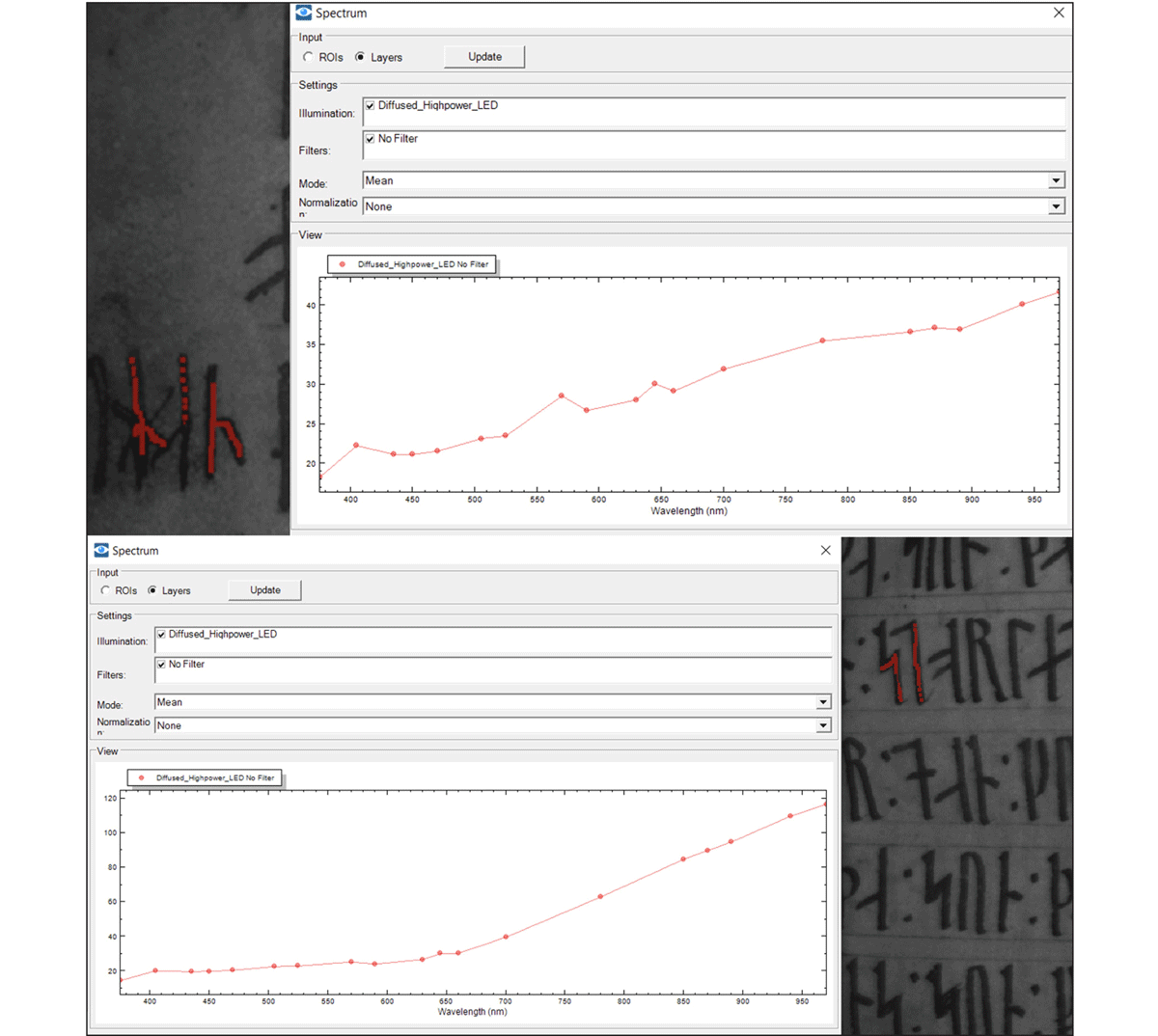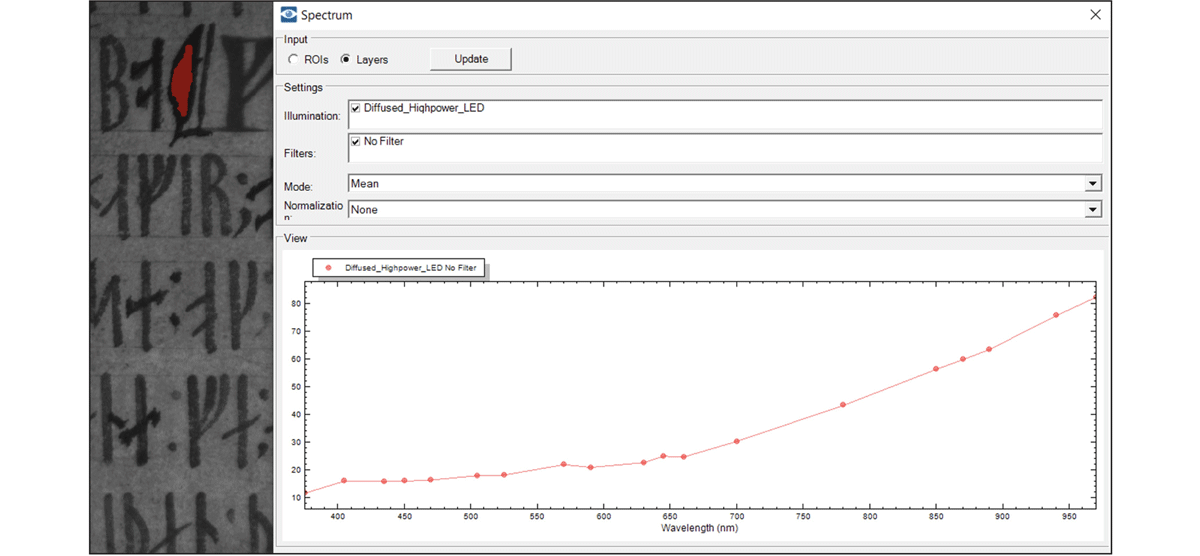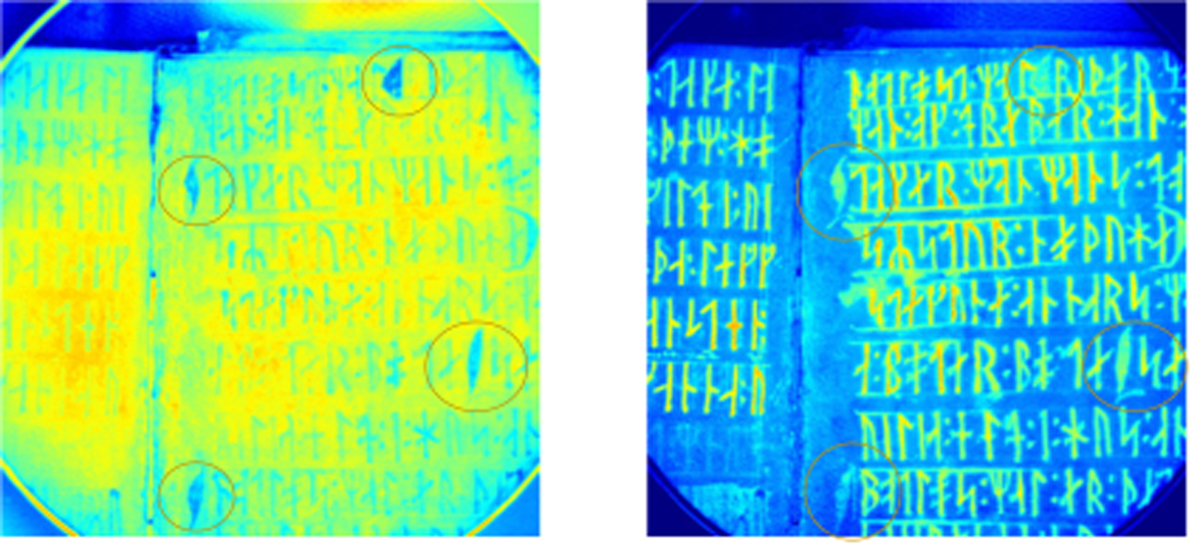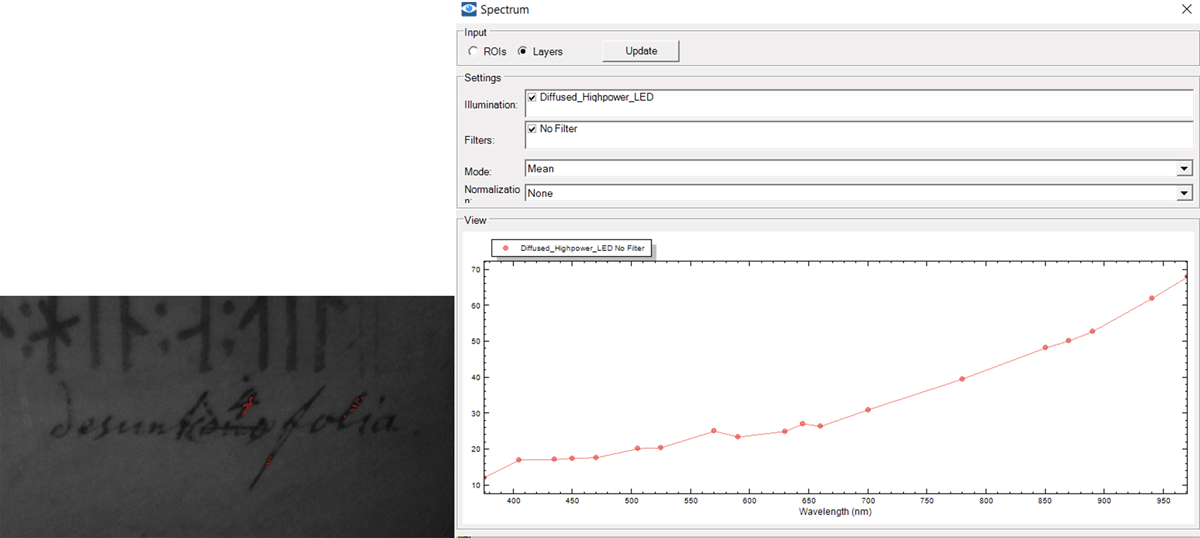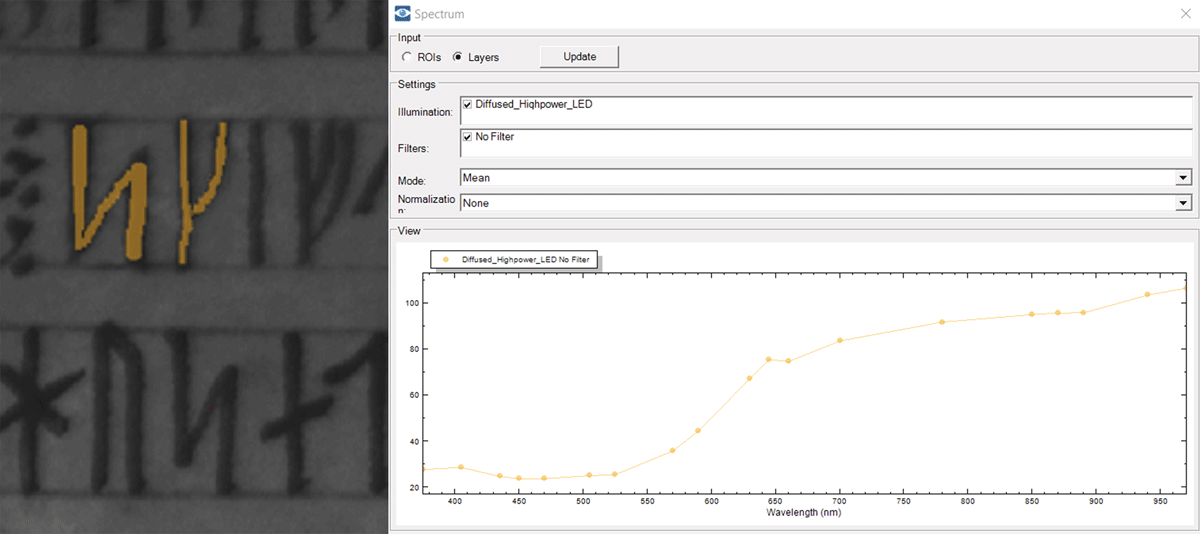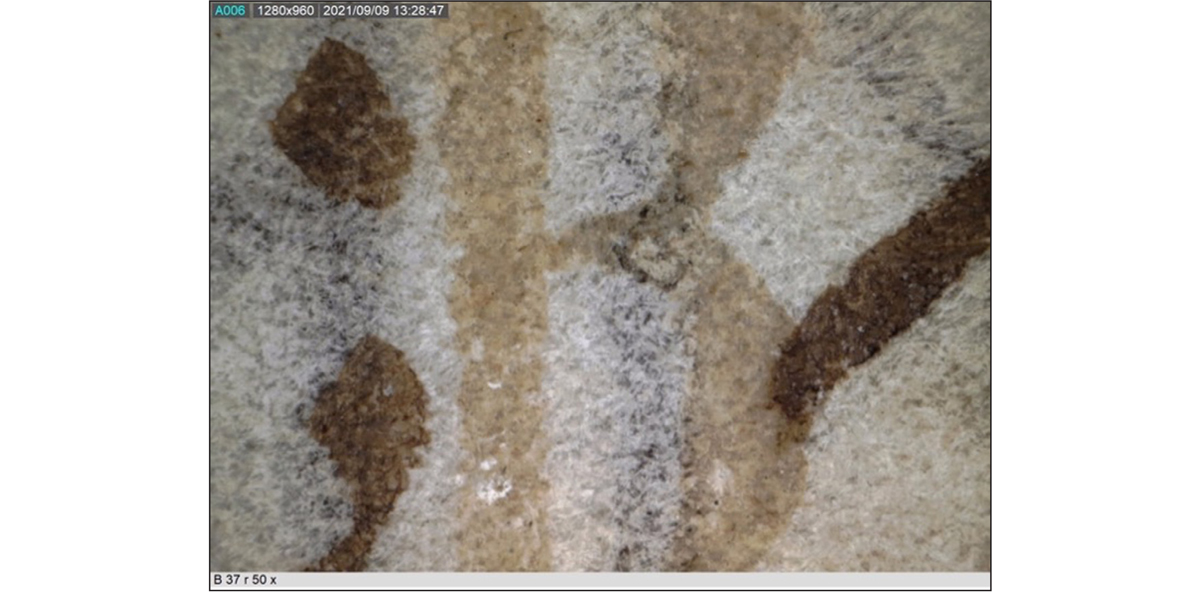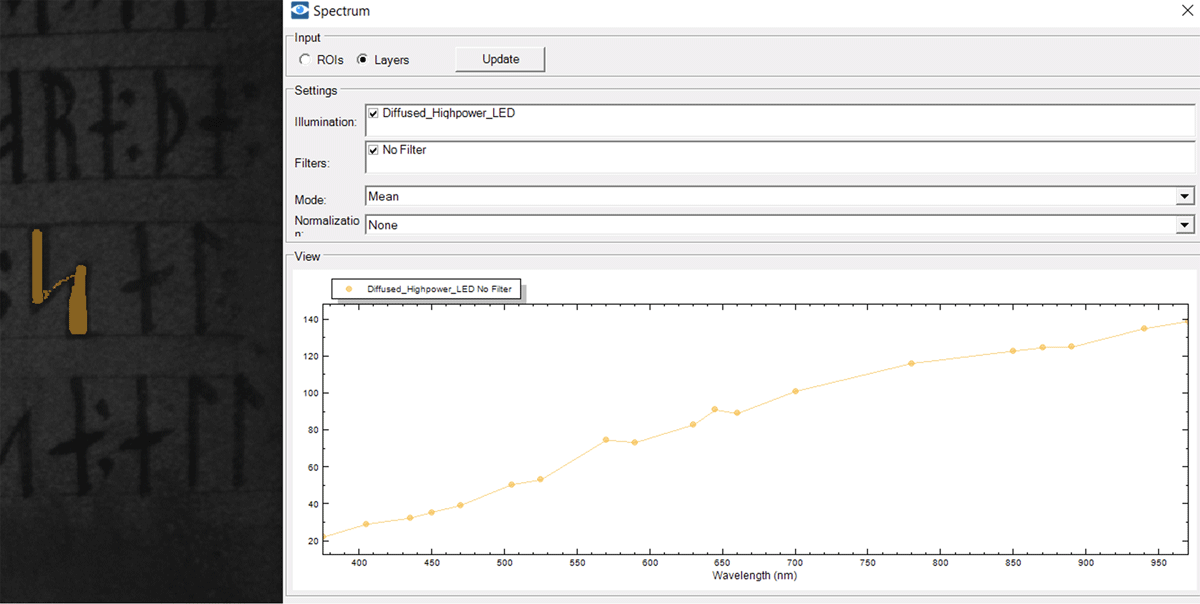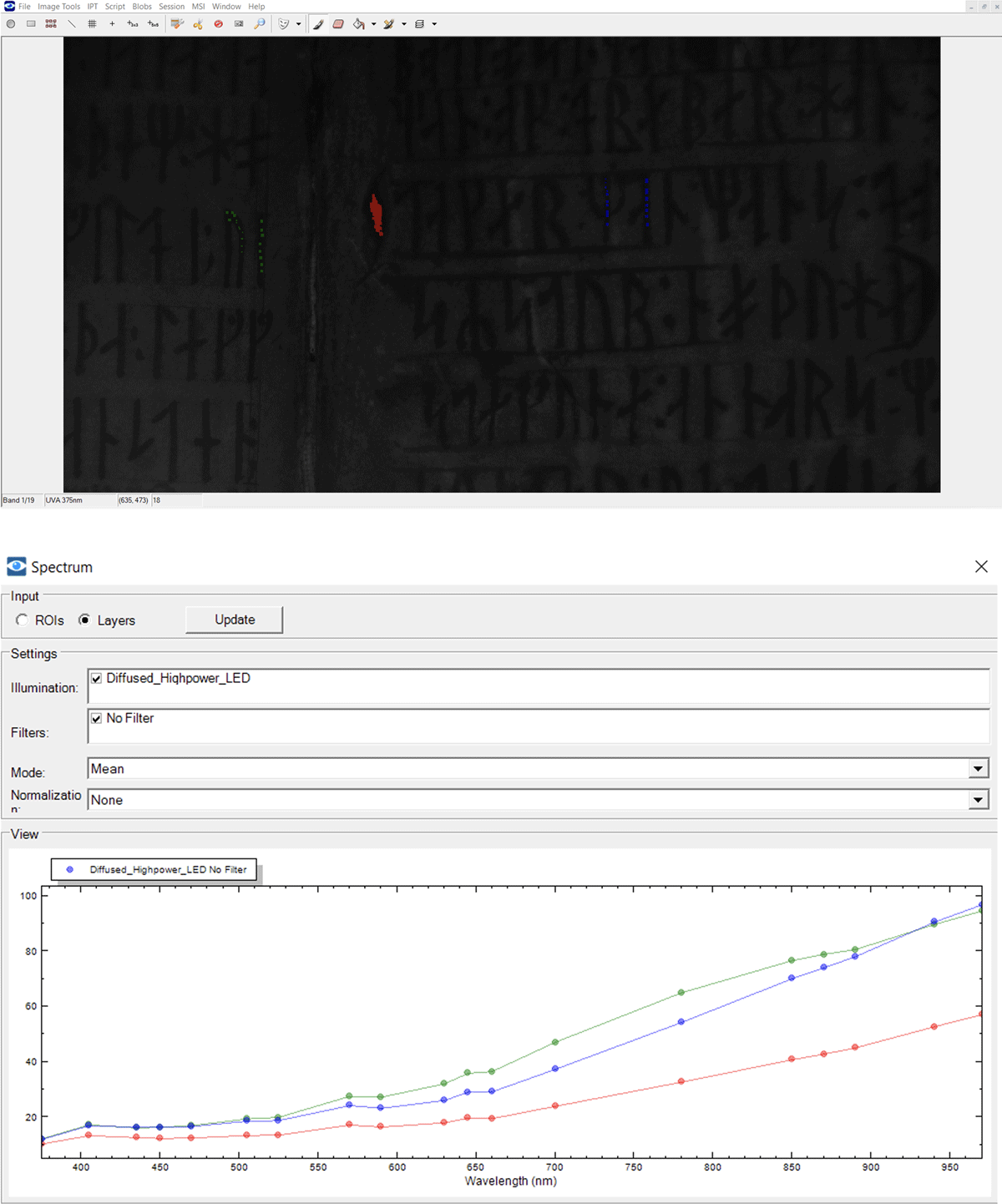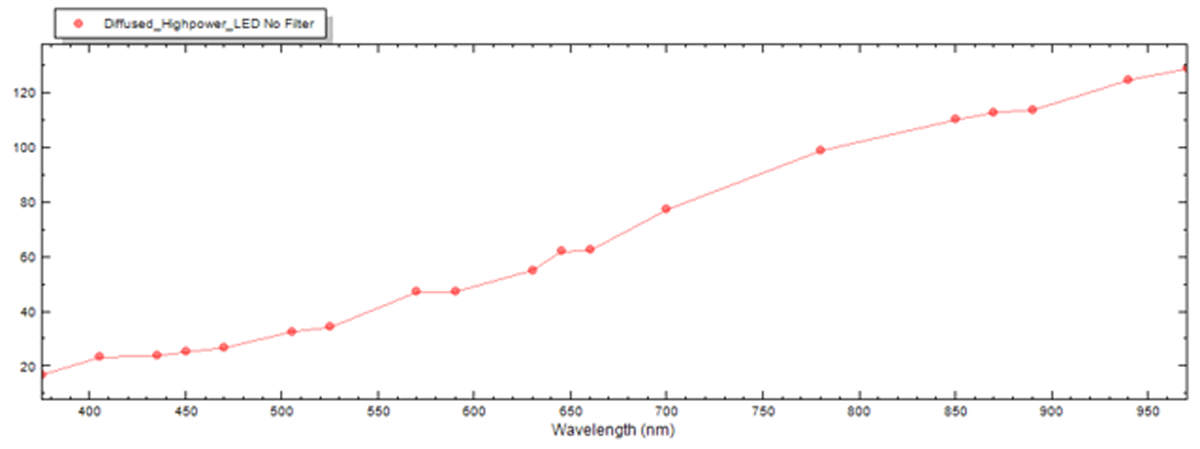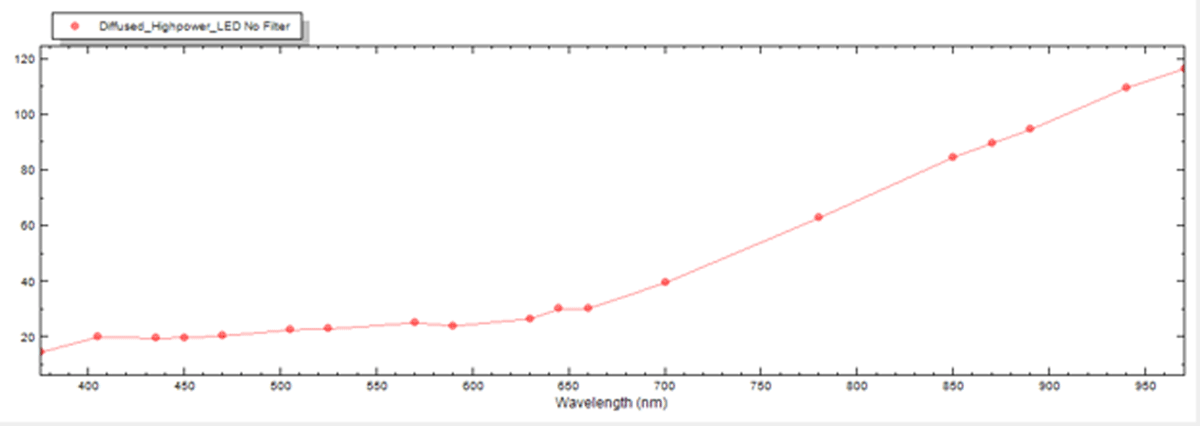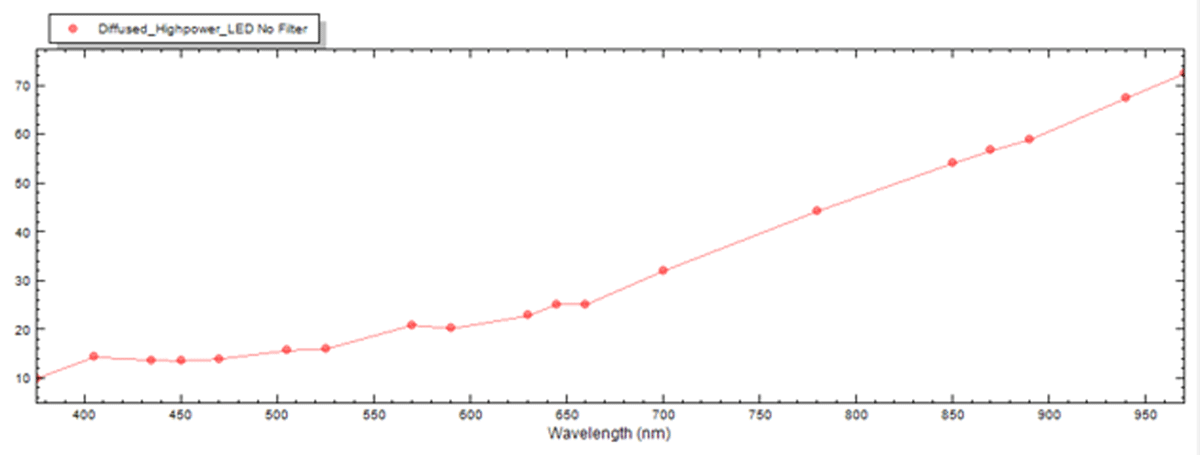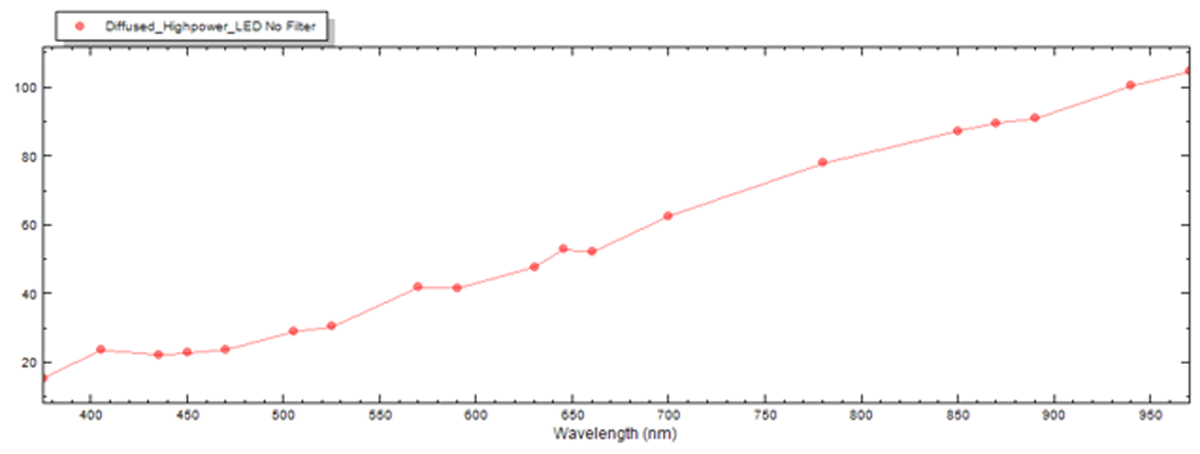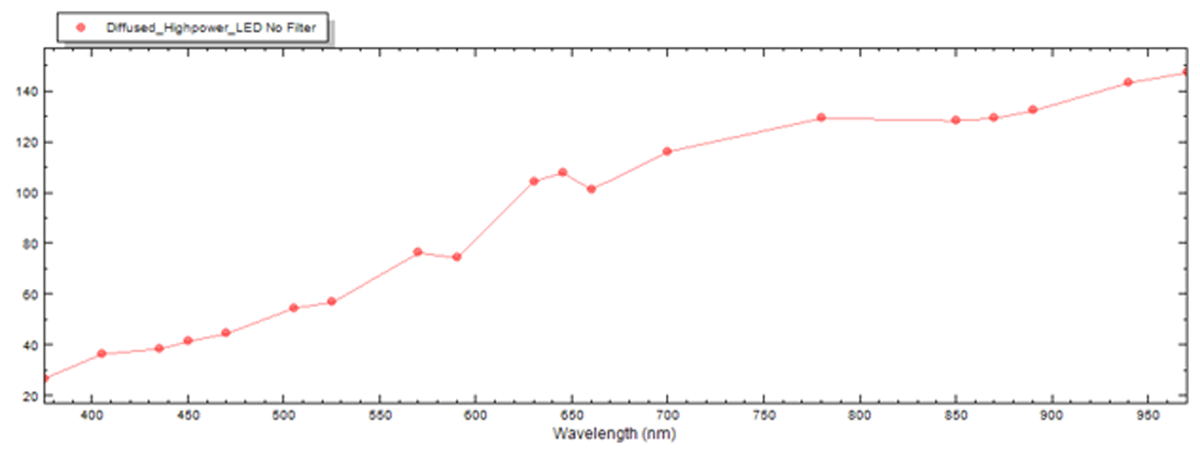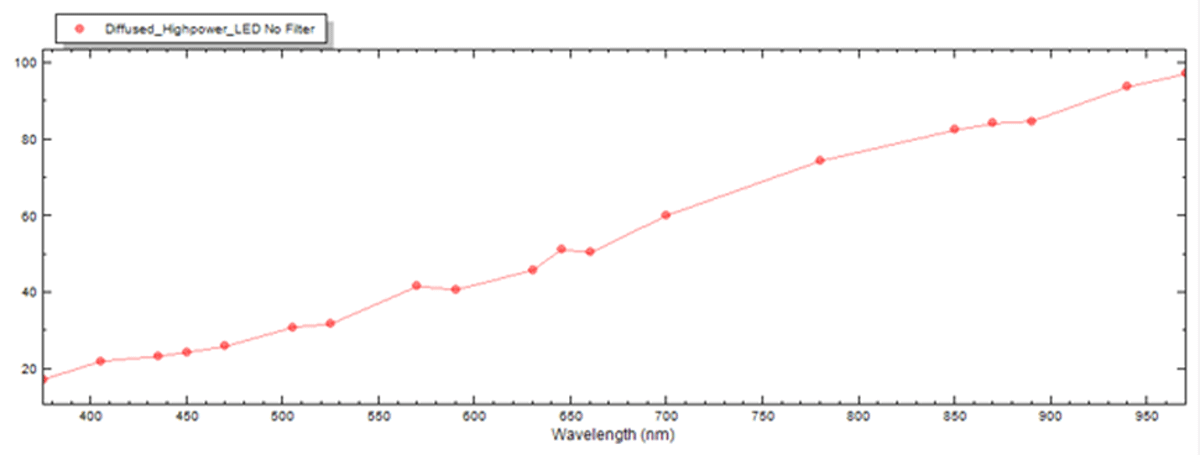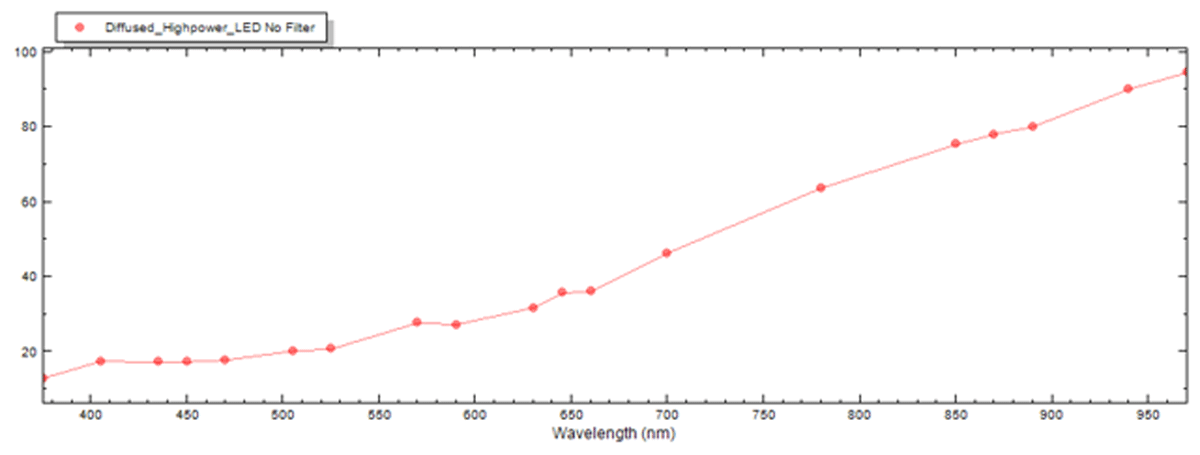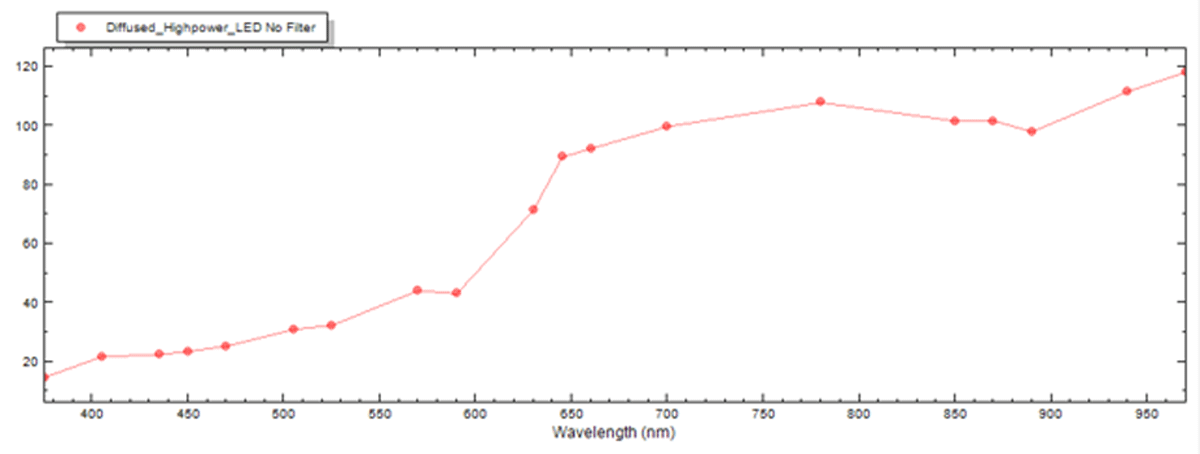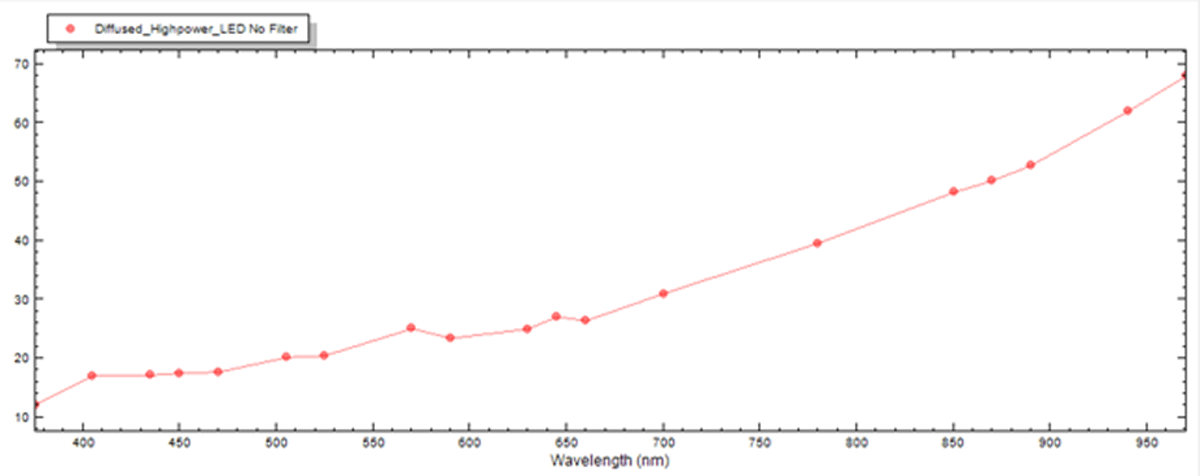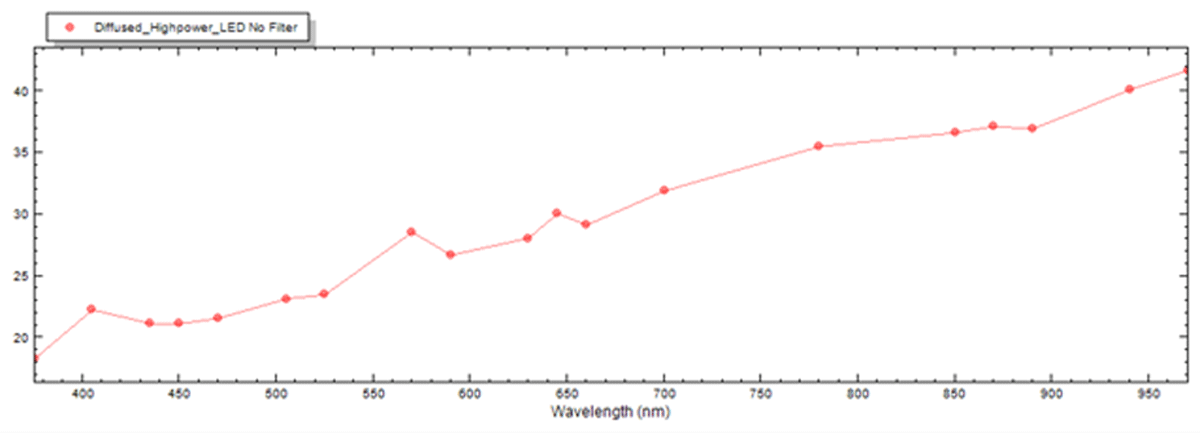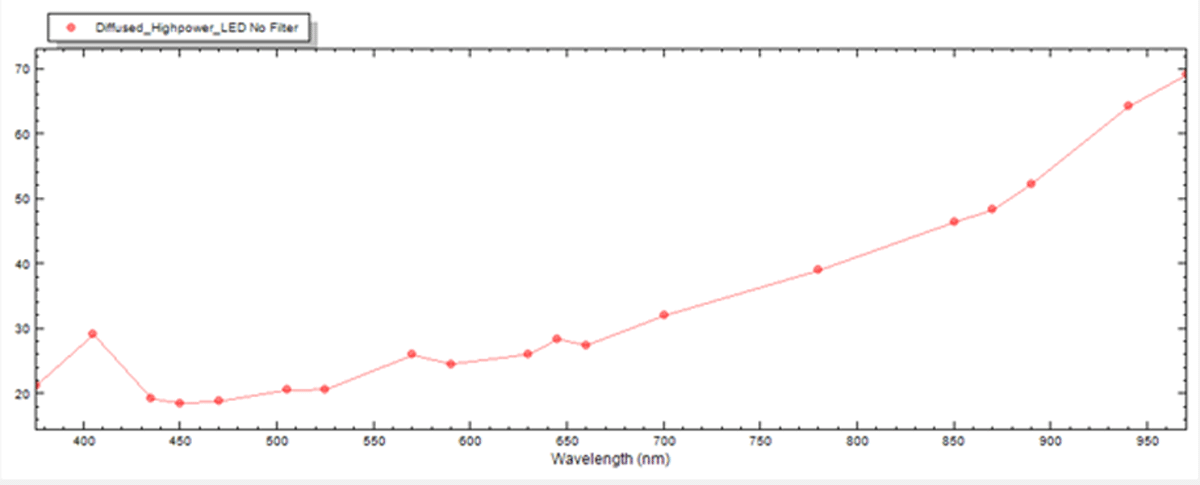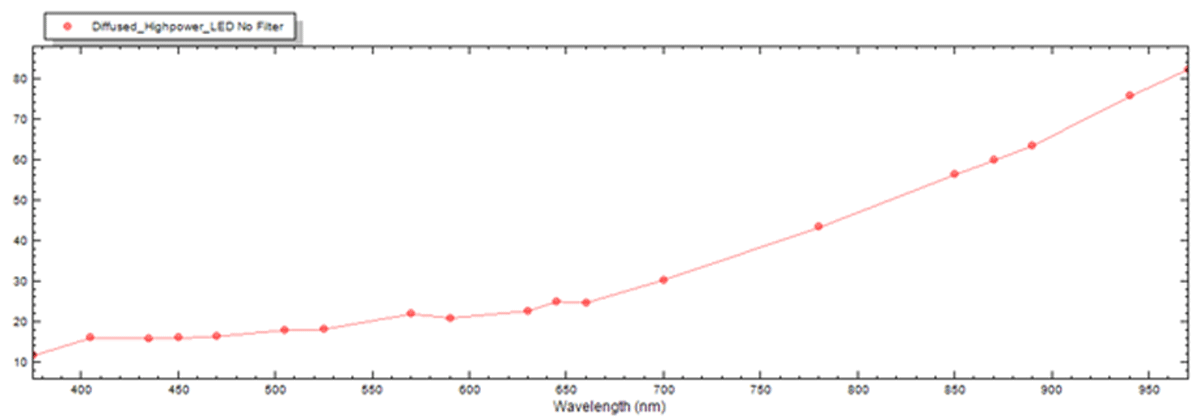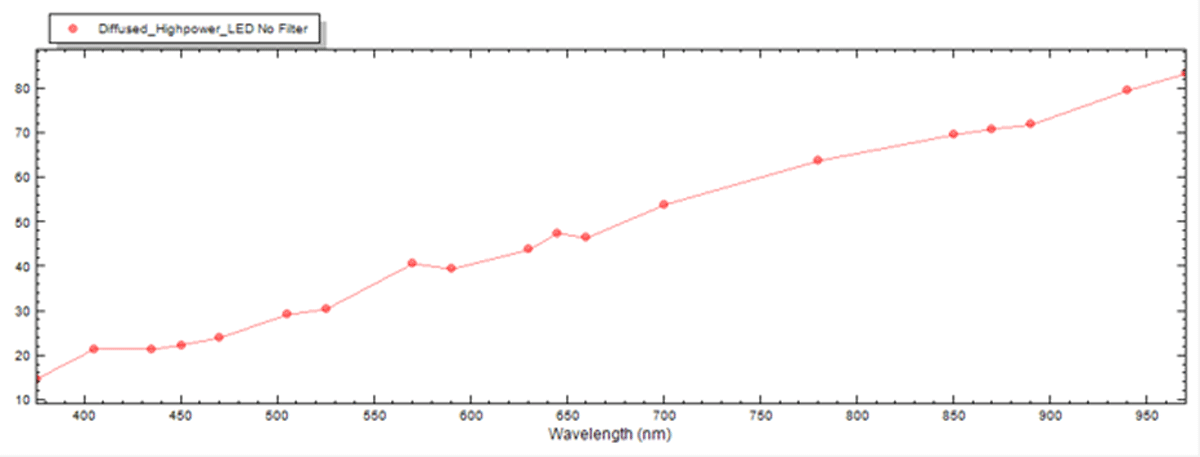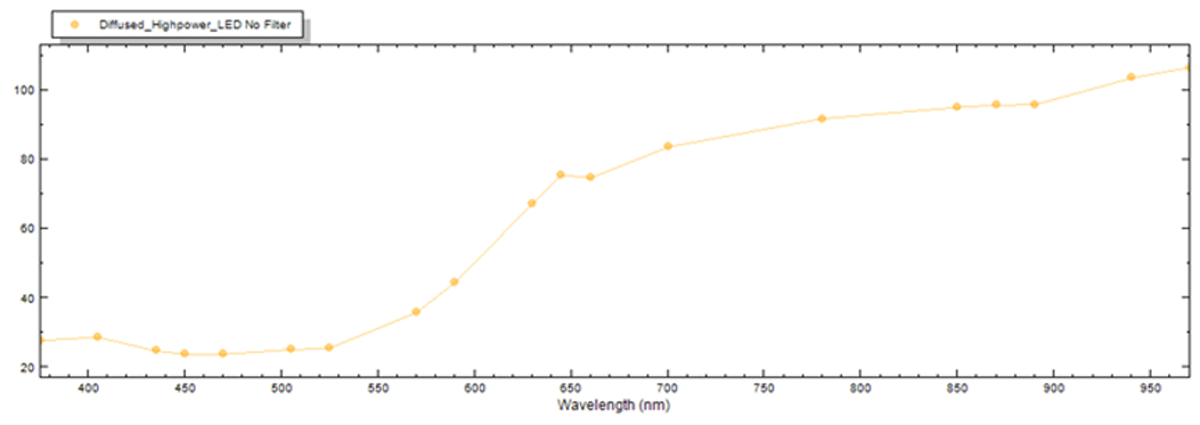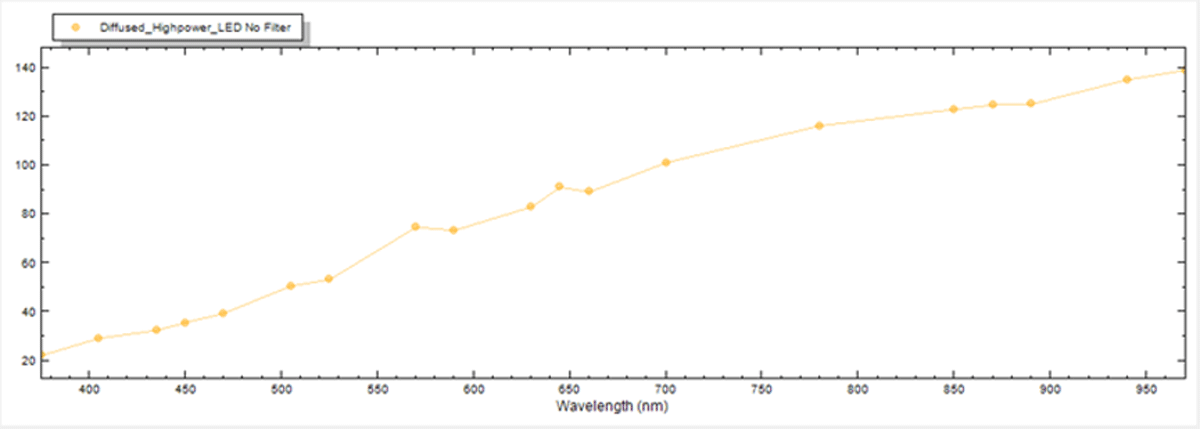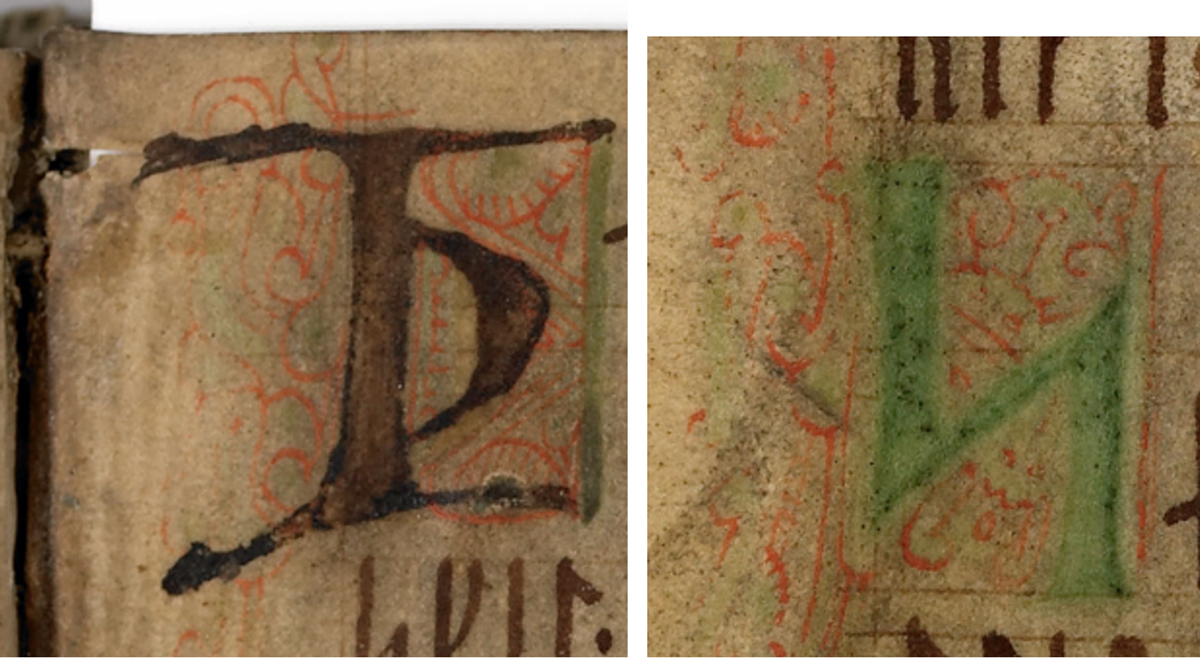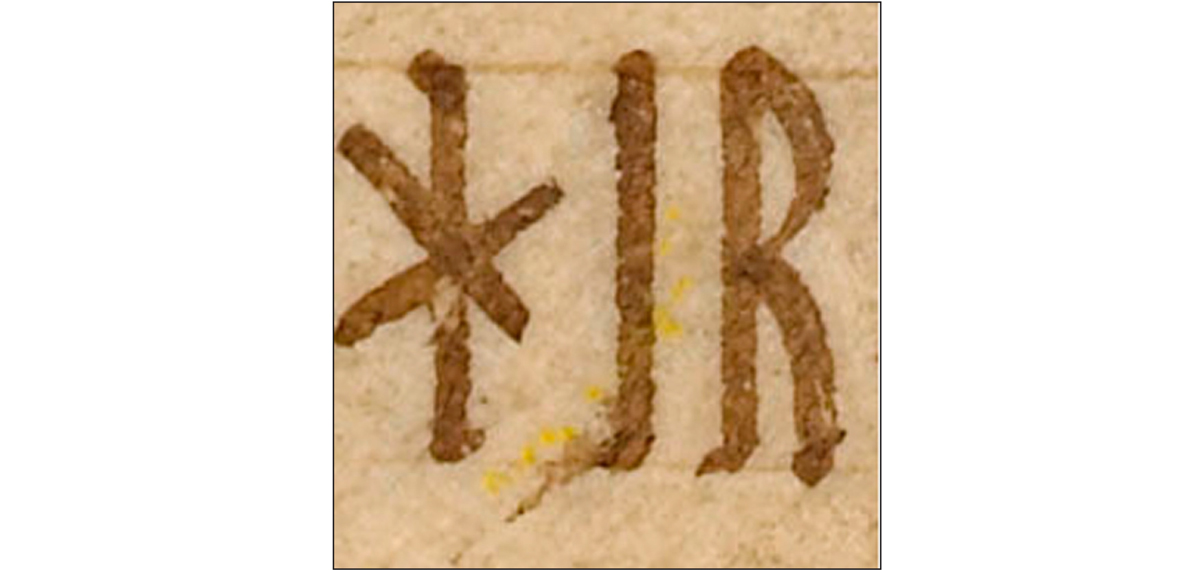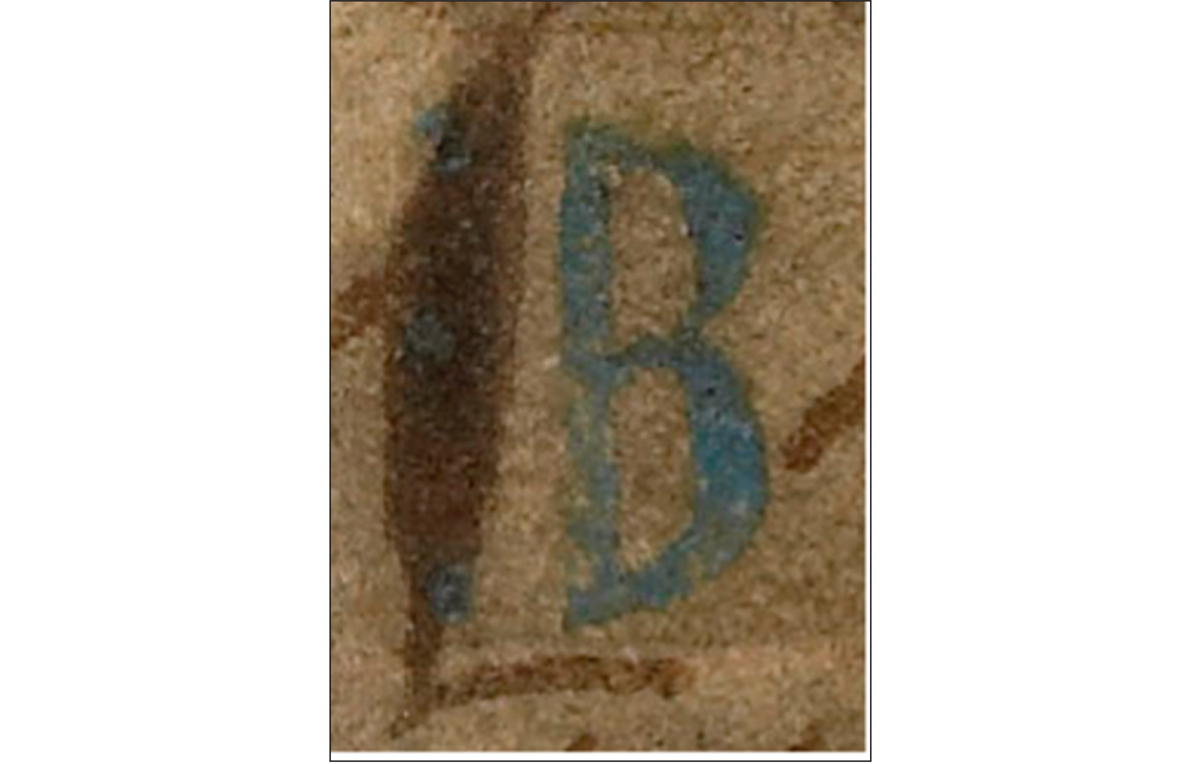Introduction
§ 1 Multispectral Imaging (MSI) is a digital imaging technique that is becoming increasingly widespread within the vast field of Digital Humanities and Manuscript Studies. Despite its incredible versatility and its spread in the last couple of decades, there are still no standard guidelines of such analysis. For example, there is no indication of the best wavelengths to use for the examination of ink on parchment or paper (see Giacometti et al. 2017). However, there is interest in moving towards the creation of a shared knowledge for obtaining as precise results as possible in different contexts, focusing, for example, on deteriorated manuscripts, ink analysis, and sharing the data without information loss. In general, MSI plays an important role in retrieving lost portions of information about cultural artefacts and enriching our understanding of them. Among the other benefits of using the MSI, the advanced imaging techniques can facilitate research in tracing occurrences of chemically similar inks, without identifying the type of ink. Just to mention briefly few of the noteworthy examples of successful application of MSI on manuscripts, the project The Archimedes Palimpsest (http://archimedespalimpsest.org/) reveals Archimedes’ faded texts and diagrams, which have been erased and written over with another Greek in a 13th century Byzantine parchment prayer book, the oldest surviving manuscript (see http://archimedespalimpsest.org/about/imaging/index.php). In the Italian panorama, the multidisciplinary investigation conducted on the 17th century Marciana Library Coronelli’s Globe employed also MSI analysis together with X-ray tomography, chemical investigation X-ray Fluorescence (XRF) among the many, for recovering hidden portions of text (see Albertin et al. 2020).
§ 2 In the Old Norse manuscript studies, the above-mentioned image-based technology has been less used, except for two notable interdisciplinary analyses (Kapitan and Stegmann 2019; Stegmann 2018). The authors discuss and show the results of multispectral-imaging (MSI) analysis of two manuscripts preserved at Stofnun Árna Magnússonar in Reykjavík, respectively AM 601 b 4to and AM 468 4to using VideometerLab, the same multispectral scanner I used in the present study. To the best of my knowledge, these two works have been pioneering with respect to the Ární Magnússon manuscript collection in Iceland.
§ 3 In addition, Michael Lerche Nielsen (Københavns Universitet) assisted with technical help on MSI Hanne Ruus (Københavns Universitet), who wrote with Dorthe Duncker a contribution on folio 100r of AM 28 8vo (see Ruus and Duncker 2019), preserved at Den Arnamagnæanske Samling (AMS) in Copenhagen. AM 28 8vo, famously known by its nickname Codex Runicus, is the main object of the present study. Even before this, AM 28 8vo has already undergone digital processes: more specifically, high-quality digital images of the manuscript have already been made publicly available in the online catalogue Handrit.is together with codicological and historical information. Nonetheless, if one wants to dive more into detail about a loss of text or characters, image processing may indeed provide a greater amount of information than digitized images. MSI is a very promising method, in that it analyzes such features that cannot be retrieved by the naked eye, and it is non-invasive. MSI uses a series of wavelengths across the light spectrum for acquiring image data: the naked eye can see wavelengths from 380 to 760 nm, which is known as the visible spectrum:
Most digital imaging equipment captures the same broad spectra of light that is visible to humans with a combination of broadband red, green, and blue sensors (this is hardly surprising, given that the outputs of most imaging technologies are those which humans should be able to see). In contrast, multispectral imaging measures a series of discrete wavelengths over a defined range. These images can be acquired in the visible spectrum and also in the infrared and ultra-violet spectrum. (Giacometti et al. 2017, 103)
§ 4 For the acquisition of multispectral images, the camera or the scanning system can be equipped with filters, which help in the capturing of images in a specific wavelength or even with light sources. Different features of the same document can be retrieved by using different wavelengths (395–970 nm) (see Table 1): for example, inks with a different chemical composition can be seen in a specific range of the light spectrum. Thus, one can decide to highlight the different portions of a text written in different inks or deteriorated areas of the document, or even different layers of texts as in a palimpsest. In the present article, I have tried to follow as closely as possible the methodological workflow for undertaking MSI on cultural heritage recommended in “Understanding Multispectral Imaging of Cultural Heritage: Determining Best Practice in MSI Analysis of Historical Artefacts” (Jones et al. 2020).
Wavelengths of VideometerLab.
| Band | Wavelength | Colour |
| 1 | 395 | Violet |
| 2 | 435 | Ultra-blue |
| 3 | 450 | Blue |
| 4 | 470 | Blue |
| 5 | 505 | Green |
| 6 | 525 | Green |
| 7 | 570 | Green |
| 8 | 590 | Amber |
| 9 | 630 | Red |
| 10 | 645 | Red |
| 11 | 660 | Red |
| 12 | 700 | Red |
| 13 | 850 | NIR (Near Infrared) |
| 14 | 870 | NIR |
| 15 | 890 | NIR |
| 16 | 910 | NIR |
| 17 | 940 | NIR |
| 18 | 950 | NIR |
| 19 | 970 | NIR |
§ 5 As previously mentioned, new image-based technologies can assist in examining further elements initially identified or not even identifiable by the naked eye. For this reason, microscopy, or microscopic analysis, helps in identifying minute details and features in the materiality of manuscripts, such as inks. The microscopic analysis employed for the present study was conducted with the Dino-Lite pro hr am7000/ad7000 series 5 Mpix, which allows to zoom in on the image up to 200 times. As a result, it is possible to see the texture of the inks, and sometimes even to distinguish the binder from the pigment. Sometimes, it has been sufficient to analyze “external” characteristics of an object with the naked eye (see Havermans, Aziz, and Scholten 2003b). Some pictures were taken with a transparent film between the lens of Dino-Lite and the AM 28 8vo, in order to protect the text and the ink, as shown in Figure 1.
§ 6 On the other side, the macroscopic analysis here presented refers to MSI using VideometerLab machine and software available at the AMS. The combination of both techniques and methods has led to new information about AM 28 8vo’s production and history. However, it is not possible to say with absolute certainty which type of ink by using only MSI, but in combination with microscopic analysis it is possible to distinguish between inks with different chemical reflection throughout the many wavelengths. In this context, macro- and microscopic analyses refer to the extent of closeness to the object that the method allows.
§ 7 Thanks to the technical support and supervision at AMS and from the Videometer team in Copenhagen (see the Acknowledgments section), I was able to conduct MSI analysis on AM 28 8vo during my research stay in Copenhagen in September 2021 within the framework of my Ph.D. project. The Ph.D. thesis is currently under embargo and will be published soon. This study presents the methodological approaches and the analysis of the results achieved in the course of my experiments. The macroscopic analysis on AM 28 8vo has been supported by the microscopic analyses of the inks, conducted with and under the supervision of Natasha Fazlic, the Head Conservator at AMS. Fazlic’s expertise was instrumental for the comparative microscopic analysis of inks, especially considering their colour and texture. (My Ph.D. thesis included also a thorough codicological and palaeographical description of AM 28 8vo: it presents, among the others, a new way of visualizing the collation formula and an insightful analysis of the inks by means of more traditional methodological approaches, that is, looking closely to the inks, and of digital-based methods as well. This part of the research was in line with the aim of the Ph.D. thesis, that is, creating a digital edition of AM 28 8vo as rich as possible in palaeographic and codicological information. The presence of later or contemporary scribal hands, errors, erasures, overwriting have been encoded, as well. The digital edition is compatible with XML-TEI P5 standards and with the Menota Handbook v. 3.0; it is now available in the Menota Public Archive [Peratello 2023].)
§ 8 It needs to be emphasized here that the possibilities for analysis (both macro- and microscopic) have been very limited, due to the condition of the manuscript. AM 28 8vo is very fragile on the spine and very sensitive to temperature and humidity changes. Therefore, it must be ensured that the conditions of the place where such analyses are conducted are suitable. In any case, AM 28 8vo cannot remain outside the caveau (where it is preserved) for more than 2.30-3 hours. For this reason, before starting the analyses, it was necessary to prepare a priority list containing the most crucial aspects to study. As a first step, I have arranged a spreadsheet where information regarding the presence of rubrics, coloured inks, initials, scribal hands writing in runic script, and Latin letters is organized accordingly. This served as reference work for the MSI analysis. After the data collection and during the data analysis, I realized that this part of the research opened a Pandora’s box (the amount of captured data largely outsized the time at disposal): even to have analyzed only a small percentage of the noteworthy material features of AM 28 8vo, I was going down a non-feasible path, given the tight timeframe of my Ph.D. project. However, testing this method for the first time has been very stimulating for approaching the field of manuscript studies from a different perspective.
§ 9 I will start by briefly presenting the current state of the manuscript, along with some relevant codicological and palaeographical features. Then, I will describe how the multispectral scanner by Videometer available at AMS works with manuscripts. I will present the inks used in AM 28 8vo, with particular focus on the light and dark brown inks used in the main text, black ink used in the corrections and marginal annotations, and red ink for rubrication. Eventually, I will discuss the preliminary results of the MSI in the form of spectral reflectance curves in combination with microscopic analysis.
§ 10 As it will be stressed throughout this contribution, the macro- and microscopic analyses done on AM 28 8vo are only at the very beginning; nonetheless, they pave the way for a complete research and study, which will hopefully be carried out in the future.
1. The current state of AM 28 8vo
§ 11 AM 28 8vo (ca. 1300) has been preserved at the AMS in Copenhagen at least since the fire in 1728 (see Frederiksen 2022). (Among the scholars, Frederiksen is surely the latest one who studied and published on AM 28 8vo. Before her, in 1877 Thorsen published the well-known photolithographic edition of AM 28 8vo [see Thorsen 1877]. Following that, in 1918 Brøndum-Nielsen provided a linguistic study of six of the oldest manuscripts [ca. 30 manuscripts], including AM 28 8vo, transmitting the Provincial law of Scania [see Brøndum Nielsen 1918]. This served as a preparatory work for volume 1 of his edition with Aakjær [Brøndum-Nielsen and Aakjær 1933]. The editors decided to use AM 28 8vo as the basis for the main text of their edition. Brøndum-Nielsen 1918’s study was in fact completed in 1917; in this year, Hänninger published his Fornskånsk ljudutveckling, where he provided a phonological analysis of the Old Scanian dialect in AM 28 8vo and Holm B 76.) It is probably the most famous medieval Danish manuscript, and, at the same time, also one of the most unusual. AM 28 8vo is a miscellaneous manuscript, as it contains different texts; however, most of them related to one another; the fil rouge is represented by the provincial laws of Scania (at that time part of Kingdom of Denmark) and its political management. As it is evident from its nickname, AM 28 8vo is entirely written in runes: the reason behind this may be found in the desire either to revive the runic tradition or to show that there was an ancient writing tradition that preceded the manuscript tradition and the texts (Hagland 2006, 151–2). Nevertheless, the layout consists of rubrics and some initials in different colours, which reveals that the Latin book format must have been used as model. Specifically, AM 28 8vo shows a more dynamic use of coloured inks once opened. To date, the manuscript appears to be in fairly good conditions, but prolonged access is not possible, due to the state of the binding and for preservation reasons. The humidity and temperature of the room where the analyses were conducted have influenced the amount of time at disposal to consult and examine the manuscript. (During the research stay at the AMS, preliminary meetings with the conservatorist team were necessary. Unfortunately, the room temperature and humidity conditions changed rapidly during those days and had a huge impact on the research and on the selection of features to examine.
§ 12 The size of the volume is 183 × 138 × 57 mm (these measurements are dated March 2018. The same applies also to the measurements of the leaves [see infra]); the cover is in parchment, as well as the binding, which dates around the second half of the 17th century and it is overall well preserved (see “Physical Description” 2023). Also, Thorsen mentioned that “a careless binding has been made” (either in W. Worm’s time on the occasion of the giving away, or afterwards in O. Borch’s time) (Thorsen 1877, 111, my translation). Borch, a Danish scientist and philologist, died in 1690, and O. Worm, who wrote marginal notes (as in f. 63r) that have been cut, died in 1654; thus, the second half of 17th century would fit as a possible dating. It is a full parchment binding with the indication of the shelfmark of the manuscript, AM 28, 8°, in dark brown ink on the top part of the spine, and of the number of the catalogue, 2224, compiled by Kålund (Kålund 1889). Its spine underwent several restoration processes between 1962 and 1981. Nonetheless, from a closer investigation, it is possible to notice that the spine still shows several cracks. The manuscript consists of 101 parchment sheets (100+1 flyleaf), which measure 177 × 125 mm. (These measurements date March 2018. According to Handrit.is, they are 174 × 121 mm, whereas those recorded by Kålund are 177 × 125 mm.) The parchment is generally of good quality, and overall, the reading of the text is accessible. However, there are some leaves with dark patches (for example, ff. 18r–v, 19r–v, and 83v) perhaps as a consequence of accidents during the writing or conservation of the manuscript, such as the exposure to liquids or dirt. Moreover, there are records of natural imperfections, due to the nature of the parchment, or damages due to the passing of time, such as parchment- and paper-eating insects, and cracks on delicate parts, made of thin parchment, used to turn the folio. All sheets were cropped and, only later, sprayed over their edges with red ink. Each side of the sheets has one column and 14 lines, with the only exception of f. 83r, which has 15 lines. They have been trimmed after the numbering of the quires, as it is possible to claim by looking at specific sheets. At the present stage, the manuscript is made up of leaves folded in 14 quires, later stapled, fastened, and bound together.
2. Why MSI with Videometer?
§ 13 Videometer is a spectral imaging company founded in 1999 and based in Copenhagen (Denmark). It is a leading company in the field of grain and food studies, and it has reached worldwide partnerships; the MSI applied by Videometer is a standard in food and seed analyses. Pigments in food, for example, share similarities in their chemical composition with the pigments of the inks found in handwritten and printed books; for this reason, it has been possible to use Videometer MSI scanner, VideometerLab, to analyze the features of interest to present study. Along with other projects, their scanners are bringing new opportunities when applied to cultural heritage in general, and more specifically to the study of manuscripts.
2.1 VideometerLab set up at AMS in Copenhagen
§ 14 VideometerLab is placed in the atelier of Suzanne Reitz, the photographer at AMS, as shown in Figure 2.
The entire room has been darkened before and during the calibration and the capturing of the pictures. Furthermore, the temperature and the humidity of the room have been constantly checked throughout the whole MSI analysis.
2.2 VideometerLab scanner: technical features
2.2.1 Camera lens
§ 15 The camera has the following features: 12.3 Mpix per wavelength, 30 µm/pixel, and 123 × 90 mm field-of-view.
2.2.2 Lights and filters
§ 16 The integrated sphere of the scanner provides indirect homogeneous diffuse light to the object. In addition, the scanner provides automated adjustment of the light intensity in each wavelength band, resulting in an improved signal-to-noise ratio. VideometerLab applied a LED band-sequential spectral imaging. It has 19 different LEDs sources, one for each wavelength, as Table 1 shows.
2.2.3 PC requirements
§ 17 For capturing multispectral images, I used the computer available at the AMS: as required in the Installation and User Manual: VideometerLab2 – Multispectral, it is a stationary PC, with 4 GB RAM. For image processing with VideometerLab software, I used both the stationary PC, while conducting the research period in Copenhagen, and Lenovo ThinkPad X1 Carbon Gen 8 with Intel processor, 8 GB RAM, Windows 10 as the operating system.
2.2.4 System set up, calibration, and maintenance
§ 18 Prior to the acquisition of multispectral images, the system had been adjusted and calibrated, and the focus validated in compliance with the instructions given in the VideometerLab manual (Videometer A/S 2024). Due to the dimensions of the scanner, specifically of the lens, AM 28 8vo has been placed in the target opening at a fixed distance from the camera: the closer it was, the higher the image quality has been. Nonetheless, the scanner must not touch the manuscript, which was placed on a pillow between the machine and the metal plate. The same distance has been maintained throughout the entire MSI process.
2.2.5 Image-capturing process
§ 19 Each high-quality image for each wavelength is acquired sequentially in 0.5–1.0 seconds. Captured images are saved by default in a single .hips file of around 100MB–10GB: the result is a cube (or stack) of 19 images, that is, the spectral image. When processed, the output images can be converted into .tiff/.jpeg/.jpg/.png for archive, storage, and dissemination use; however, these may not be used for further image processing, as they are only a screenshot. Despite the large amount of data that each spectral image contains, .hips files can be easily put into .csv, .xslx. Before processing the captured images, any misalignments have been corrected.
2.2.6 Image processing
§ 20 The acquired images have been processed using two techniques: spectral (or reflectance) curves and nCDA (normalized Canonical Discriminant Analysis, a modern version of canonical discriminant analysis from Fisher 1936). The former has been employed to document how the pixels associated to different inks react to each wavelength. The latter works with the image being processed by supervised learning performed by painting layers (layer 1 for ink, layer 2 for background material, etcetera): for instance, red for layer 1 (e.g brown ink); green for layer 2 (e.g. dark brown ink), etcetera. By doing this, each layer is discriminated against the others. The software combines the supervised data with those drawn from all 19 bands and associated with statistical data. The output consists of false-coloured images highlighting spectrally similar pixels: the contrast and brightness can be adjusted. Both imaging processes are supervised techniques, meaning that they operate on non-automated labelled data. In addition to this, both processing techniques are used for enhancing specific features of multispectral images, such as similar inks, layers of inks, faded text.
3. MSI with VideometerLab on AM 28 8vo
§ 21 Until today, nobody has applied MSI (and microscopic analysis) thoroughly on AM 28 8vo. As already mentioned supra in the introduction, Lerche Nielsen is the only scholar, to the best of my knowledge, who analyzed AM 28 8vo with VideometerLab, and his analysis was focused on one folio. The data and results here presented have added important information in support of what is detectable by looking on the digital images or the physical object (that is, manuscript, inks, parchment) with the naked eye; they can indeed lead to new discoveries about the production of AM 28 8vo. As a first step, I have done three pilot tests for testing the light settings of VideometerLab and the software before conducting the analysis on AM 28 8vo. Specifically:
I have learned how to use the Videometerlab with images of other manuscripts from the same manuscript collection as AM 28 8vo;
I have taken pictures of a sample text I wrote with different inks on paper;
I have taken and processed pictures of fragments (parchment, paper, leather) for testing the different results.
§ 22 On 21st September 2021, I conducted the MSI analysis on AM 28 8vo under the supervision of Fazlic and Reitz, for the codicological examination of the manuscript, and Lerche Nielsen, for the technical support. The multispectral scanner and working station (computer with the licensed Videometer software) are placed inside the AMS and cannot be moved. I have followed the technical instructions: I have created a dark space when taking the images of AM 28 8vo with VideometerLab, which are of 9 × 9 cm: for this reason, it was mandatory to divide the area of each sheet into six even parts. It is important that each image overlaps for at least 10% of its area with the adjacent images, as shown in Figure 3.
An example of subdivision of f. 1r into six even parts, saved as (from left to right) AM_28_8vo_1r_1; AM_28_8vo_1r_2; AM_28_8vo_1r_3; AM_28_8vo_1r_4; AM_28_8vo_1r_5; AM_28_8vo_1r_6. (I have to thank Katarzyna Anna Kapitan [University of Oxford] for this suggestion.) Photograph by Suzanne Reitz. Published with the permission of AMS.
This subdivision helps in creating an organized back-up of each picture in the server. If necessary, the software allows to combine all six images in a single multispectral image of the entire sheet. The main aim of this investigation was to check any similarities or differences of the ink used in ff. 92r–100r, where hand2 wrote, and that used in corrections and additions in ff. 1r–91v, written by hand1. The naming of the scribal hands here used has been provided by me. However, Farrugia (Farrugia 2022) also writes about three hands of AM 28 8vo and refers to them as first scribe for ff. 1r–91v, the second scribe for ff. 92r–100r, and third scribe for ff. 83r–v. It is remarkable that these corrections are present only in texts in the folios just mentioned. In addition, these inks look very similar in the digital images. Within ff. 1r–91v, a third hand, which I also named in my Ph.D. thesis as hand3, wrote ff. 83r–v: here too corrections were made; in particular, paragraphus signs were added later at the beginning of new sentences. The same signs are found also further on in the manuscript, up until f. 84r.
3.1 Data management and data storage
§ 23 According to Jones and colleagues (Jones et al. 2020), it is crucial for the present and future research using MSI to collect and storage the data in a systematic way. The captured images have been stored in two locations: the drive of the department and my personal hard drive. Together, they have allowed me to carry out the analysis of the images on a non-stationary PC. From a practical standpoint, these data can be made accessible to other scholars; in support to this, microscopic images taken during my research have been backed up in the department drive and made available for study, teaching and research purposes. (The microscopic images have already been used during classes on the conservation of manuscripts at AMS.) In addition, such information could be useful in comparative analyses with other projects on manuscript and ink analyses.
3.2 Data analysis
§ 24 The following section concerns an example of the application of the MSI to an unreadable portion of text and how the data have been analyzed with VideometerLab. The objective was to recover an unreadable text on f. 83v.
§ 25 As already discussed, MSI can also help in recovering lost, faded or, in some cases, erased texts. A first test has been done on f. 83v, which seems to be a recycled sheet, with a faded, hence unreadable, text written in Latin letters. This evidently clashes with the runic script in the rest of the manuscript. Among the many significant features, the (apparently) faded text on f. 83v certainly represents the most intriguing case when applying MSI; what can be “read” are Latin letters instead of runic characters, as one may expect. As already said, the text on ff. 83r–v was written by hand3, which is “dated around 15th century” by Frederiksen (Frederiksen 2022), hence around two centuries later than hand1 and hand2. (Brøndum-Nielsen and Aakjær dated the oldest marginal and interlinear additions in Latin alphabet letters in AM 28 8vo to around the 15th century. Moreover, the authors considered f. 83r to have been written by the same hand1, thus to the end of the 13th century [Brøndum-Nielsen and Aakjær 1933, xcviii].) What distinguishes this parchment sheet from the others is principally the mise-en-texte: in particular, the runic characters functioning as initials (or litterae notabiliores) at the beginning of the text (Botløst mal), an appendix to the legal text of the provincial law of Scania (ff. 1r–91v), are rendered in the same dimension as the following characters. The same rendering applies to those characters at the beginning of new sentences. As for f. 83v, only the first line of the text is written in runic characters, very close to the top margin of the folio. However, it does not read easily, as some characters are faded. Below this line, the folio is almost blank, except for a stain expanding for one-third of the folio, from the top margin downwards; in addition, another stain covers the central portion of the sheet, as shown in Figure 4.
§ 26 It is unknown whether these patches are a consequence of an attempt to erase the under-text, or even to read the text, nor is it possible to assert with absolute certainty what caused it, as it is not possible to conduct invasive analysis of AM 28 8vo. This sheet was added later than the remaining 99 in the manuscript; moreover, it does not seem to be of the same quality as the others, while it is obvious that the same care and attention was not given to the writing (widespread erasures, overwriting, different character size, crooked ruling lines). The quality of the sheet looks up to its use, that is, for containing a marginal text (i.e., an appendix to the Law of Scania). Moreover, the scribe was not so neat in writing. Hence, the parchment could have been recycled. There are three likely explanations for the presence of this blank, yet not virgin, space: 1) the erasure of the original text (of which we can still read letters of the Latin alphabet); 2) the scribe who wrote f. 83r and the first line of f. 83v stopped writing in runes and continued writing in Latin letters; or 3) the scribe who wrote f. 83r and the first line of f. 83v stopped writing because the folio was already written over and no longer continued with the text of the legislative appendix (note that f. 83r is not a palimpsest). Given this, MSI applied to AM_28_8vo_83v_1 has been processed (for the naming of the captured images, see Figure 3), as Figure 5 shows.
In NIR wavelength, the first line of text written in runes, as well as the stain, disappears; on the contrary, the text in Latin letters is still visible. This suggests that explanation 2 is very unlikely, as the inks of the text in runes and of the text in Latin letters react differently to the the same wavelength. This is due to the presence of two different inks (the presence of such a patch on this particular sheet should be investigated further).
4. MSI and microscopic analysis of the inks
§ 27 The Swedish scholar Schlyter was the first who provided a description of the inks used in AM 28 8vo in 1859: “[b]läcket är brunt, temligen ljust, stilen jämn och säker” (“[t]he ink is brown, rather light, the style even and steady”) (Schlyter 1859; my translation). I could not find other similar codicological information in the literature regarding AM 28 8vo. The inks used in AM 28 8vo are actually many and more than just brown; furthermore, they are used in different positions throughout the manuscript. In the following section, I have gathered the inks in accordance with their colour; their MSI and microscopic analysis are also included.
4.1 Light brown ink
§ 28 It is a warm-toned brown used to write the texts on ff. 1r–91v. As for its external features, it is possible to see with the Dino-Lite the ink shows patches, as shown in Figure 6 (see Havermans, Aziz, and Scholten 2003b). This suggests either absence of the ink (especially on the outline of the trait) or the presence of the binder (lighter patches within the ink).
§ 29 A very similar ink is used for tracing the ruling lines, which are clearly marked and are the same throughout AM 28 8vo. However, MSI highlights the difference between the ink used in the ruling from that used to write the texts. In some records, the ink utterly disappears as Figure 7 shows.
This difference is persistent throughout the manuscript, also in the folios where the scribal hand changes (ff. 83r–v and 92r–100r). In addition to the textual part, there are two maniculae that could have been written later than the main text. The first one (in order of appearance) is found on f. 28r as Figure 8 shows.
Under NIR wavelength, the manicula on the right margin is still visible; on the contrary, the main text disappears. Then, layers have been created for identifying the inks to be later compared with nCDA: layer 1 applied to the ink of the manicula, layer 2 to the ink of the main text, and layer 3 to the parchment as a background on the manipulated image (see Figure 9).
This picture is then processed by “Transformation Builder” function in Videometer software, which applies the nCDA method, as shown in Figure 10.
In this case, the pixels of the manicula have a lighter colour than those of the text, meaning that the ink might be different and/or might have been written in two different moments and the ink changed. The second manicula is drawn in the right margin of f. 99r. From a closer look to their style, both maniculae seem to have been drawn by two different hands; furthermore, the ink looks also different. They have been placed in two different positions in the manuscript: the former point to a passage of article 10 from the provincial law of Scania written by hand1, the latter is pointing to a section of the description of the border between Denmark and Sweden, written by hand2, with an incomplete annotation in Latin below it. (Specifically, the numerical reference 5.10 written in the outer-right margin in black ink refers to article 10 from Book 5 after the division of the law in Ghemen’s edition from 1505. Whereas, in Brøndum-Nielsen and Aakjær [Brøndum-Nielsen and Aakjær 1933], the same legal article has the number 93 [following the order of the articles of the Scanian law]. It is noticeable that there is no division into books in AM 28 8vo: this subdivision was adopted only later by O. Worm, who, according to Thorsen [Thorsen 1877], directly added some indications in AM 28 8vo; furthermore, he stated that N. M. Petersen mainly added the numbering from Ghemen’s edition in the margins of AM 28 8vo [Thorsen 1877, 42] and that he [Thorsen] added those that Petersen did not include. Otherwise, Thorsen is to be considered the scribal hand of the other added numbers. [See infra in 4.2 Black ink.]) With reference to their multispectral and macroscopic analyses, it seems very likely that the ink of the manicula on f. 28r has the same colour-base of ink as that used in the main text, namely light brown, as both inks show a close trend of in the curve of spectral reflectance, as Figure 11 shows.
This would suggest that the manicula on f. 28r was drawn by the main scribe for highlighting a passage of the text s/he has just written, with the same ink of the text but watered down. Afterwards, when AM 28 8vo was bound, the folio was trimmed on the side of the marginalia, as the lower part of the drawing indicates. In fact, according to Frederiksen, this was originally a manicula with a sleeve, as it can be found also in other manuscripts (Frederiksen 2022).
4.2 Black ink
§ 30 As well as light-brown ink, black ink is used diffusely, although not by the main scribal hands (hand1, hand2, hand3), but by a later scribe (or, very likely, more than one at different points in time) who edited and annotated the main texts. This ink is found in 1) corrections over the text, 2) within the text, and 3) marginally. The writing is similar in the first two cases, while it is certainly different in marginal notations. In case 3, the scribe(s) add(s) new text with different functions, as it is the case of the presence of lacunae: there are notes such as desunt 4 folia (f. 18v) (the Arabic number 4 is corrected from duo), desunt multa (f. 34v), desunt folia 2 (f. 26v), suggesting the loss of a consistent quantity of leaves (see also ff. 22v and 24v which state that “here some seem to be missing”). According to Thorsen (Thorsen 1877), the indication of missing leaves were recorded either by the Danish philologist Ole Worm or the Danish linguist Rasmus Rask. These are written in the inner-lower margin on ff. 18v, 22v, 24v, 26v, 34v (all concerning the text of the provincial law of Scania), as shown in Figure 12. In addition, despite the presence of these numerous lacunae, the foliation does not consider these, as there are no missing leaves: it is indeed later.
§ 31 All leaves have been foliated on the upper-right corner of the recto from f. 1 to f. 100r, including the flyleaf, which has the foliation 1ar and 1av. The ink of the foliation seems black at first, but it changes towards dark brown as the numeration grows (Thorsen admittedly applies to the added chapter division after Ghemen’s edition; see Thorsen 1877, 42). Also, quire numbering in the lower-right margins is written in black ink, and it is quite consistent until f. 80r. The numeration comprises minuscule Latin letter (a, b, c, d, e, f, g, h, i, k, l, m, n, o) followed by roman counting (i, ii, iii, etcetera). The ink is clearly different from the foliation numbers, and the trait is much thicker and less precise (see Figure 13). It is dated around 15th century by Schlyter and by Kålund (see respectively, Schlyter 1859, v; and Kålund 1889, 344). Given the numerical succession of the quire numbering, it is possible that it was written before the indication of lacunae, and that is not consistent after f. 80r for unknown reasons.
§ 32 As previously mentioned, the ink used on ff. 92r–100r and the one used in corrections and additional notations in the texts written by hand1 seem similar in colour (when one consults the digital images of the manuscript available on Handrit.is), but not in the precision of the handwriting trait. I decided to compare both inks to understand the differences and the similarities (if any). However, the trait of these interventions looks more imprecise than that of the text on ff. 92r–100r. The corpus of marginal and interlinear additions created interest in taking the macro- and microscopic analyses. Overall, AM 28 8vo contains small sections of notes and marginalia: 1) infralinear additions in Latin letters for example, transliteration of the words or portion of the runic text [f. 82v,7]); 2) infralinear additions in runes for example, words or parts of text forgotten during the copying stage [f. 81v]); 3) marginal additions in Latin letters for example, comments to the main text on f. 99r), and indication of the legal articles (for example, it reads primus articulus on the inner margin on f. 84r; there are also some not readable because they have been either erased or cut away; this is the case of the lower margin on f. 46v: between line 10 and 11 there are two pairs of strokes after tha and hun that refer to what was an extended marginal note on the lower part of the folio); 4) marginal additions in runes are catch-words (f. 94v), catch-letters for the rubricator (f. 80r). Before looking into details with the Dino-Lite, a comparative analysis of two dry pigments (sepia and burnt wood) was done (this was proposed by Fazlic). Apart from the different colour, the noticeable difference lies in the materiality of the pigments: sepia looks grainer than burnt wood (see Figure 14), which instead appears flakier (see Figure 15). According to Thompson:
Two kinds of black ink were known and used in the Middle Ages, one a suspension of carbon and the other a suspension of a black salt of iron mixed with other salts in solution which became black after used. The iron inks represented the common, standard writing material of Medieval Europe. […] As a result of the sting of certain insects, oak trees develop little round, nut-like swellings called galls or gall-nuts. These gall-nuts contain tannic and gallic acids which can be soaked out of the dried galls with water. The solution is clear and substantially colourless; but if it is mixed with a solution of an iron salt, a purplish-black compound is produced at once, and the ink becomes still blacker with age. (Thompson 2003, 81)
§ 33 Also, vine-charcoal black (from young shoots of grapevines or as in certain medieval recipes nigrum optimum), willow black, peach-stone black, almond-shell black, graphite, and colour grinding (most colours were often first milled dry and then ground into a paste with water). The binding medium helps in holding the pigments in place and influences the rendering of the pigment. Some of them are wax, gum arabic, oil, varnish, oil glaze, siz, egg-yolk, glair, gum tragacanth, but it is not possible to state with certainty the chemical composition of the inks above presented, as the only analysis feasible was by means of Dino-Lite. It was then possible to compare the two pigments with the ink used in the manuscript.
§ 34 The accurate comparison between the ink used from ff. 92r to 100r and that used in the emendations suggests that these are very likely two different inks. Furthermore, the ink on f. 92r produces a different spectral reflectance from that of the black ink used on f. 6v for correcting the text, as seen in Figure 16, within the range 400–650 nm.
This opposes to the reflectance of what looks like the black ink of the paragraphus sign, added later, on f. 3r,5 (see Figure 17).
§ 35 The same overwritten sign is found on f. 83r,1 and onwards. It has been compared by means of nCDA method to the ink of the main text (written by hand3), as shown in Figure 18.
After the application of nCDA, it is clear (especially in band 1) that the ink of the text on f. 83r is very likely different from that used for the paragraphus signs added later. Also, the ink used in the marginal annotation of the lacuna desunt 4 folia in the lower part of f. 18v (see Figure 19) shows the same reflectance as that of Figure 17.
The ink of the indication of the article 3.12 on f. 18v, which according to Thorsen (Thorsen 1877) was written by Petersen or Thorsen himself, differs from that of the note on the lacuna on the same folio in terms of reflectance but (clearly) not rendering on the parchment, as Figure 20 shows. This corresponds to Thorsen’s information regarding later editorial interventions on AM 28 8vo: that is to say, Rask wrote the indication of lacuna on ff. 18v, 26v and 34v, whereas, those on ff. 22v and 24v are due to Worm (see Thorsen 1877, 42). Moreover, Worm’s hand reveals as typical of 17th century, whereas Rask’s hand as 19th century (see respectively Kroman 1970).
§ 36 If we also consider f. 100v (despite the fact that the texts from AM 28 8vo end on f. 100r), black ink is used as well. The rendering of the characters (for instance, see the dotted-p rune written twice without respecting the graphic boundaries) and the low saturation of the ink (which also appears to have been watered down) combined with its location on the back of the last sheet, suggests a scribble or proof of writing text. Black ink is found also on flyleaf (ff.1ra–v). However, this can indeed be part of further analyses with VideometerLab and other methods.
4.3 Red ink
§ 37 Red ink is found in rubrics, “capital” runes at the beginning of new sentences, decorations of punctuation marks and initials, ruling lines (on ff. 1r and 7v), and on the top edge of the manuscript as a further decoration. Apparently, there are no significant changes in the rendering of the red ink used. Its spectral reflectance curve has the trend shown in Figure 21.
4.4 Faded red-toned ink
§ 38 There are records of faded ink used for “capital” runes from f. 37r onwards: given the fact that this ink is used for initials, from a preliminary analysis, this may look as a sort of red-toned ink, as the warm tone to it would suggest (see Figure 22). Perhaps, it did not hold as the red ink was used for initials, ruling lines, and decorations. It happens that these “faded” initials alternate with full-red ink initials.
The spectral curve of the “faded” ink does not evidently overlap with that of the red ink, especially within the span 380–650nm, as shown in Figure 23. This might suggest that a different composition at the base of this ink (perhaps egg tempera), and that the colour would have been different.
5. Preliminary results and discussion
§ 39 This section outlines and discusses the main preliminary results from the images and graphs generated by Videometer software.
5.1 Brown inks
§ 40 As mentioned, the brown-based ink is the most used throughout the manuscript. Despite this apparent homogeneity, the inks used by the three scribes (hand1, hand2, hand3) produces curves that are not (completely) superimposable. As an example, Figure 24 shows three curves: the green for hand1, the red for paragraphus sign, and the blue for hand3.
On the top, the association to three layers: green to the brown ink on f. 82v; blue to the brown ink on f. 83r, and red to the (dark) brown ink of paragraphus sign. At the bottom, the spectral reflectance curve of the three layers (red and blue on f. 83r, and green on f. 82v). All powered by Videometer.
It is evident that the red curve has a different trend than the other two; also, green and blue curves differ in the range 550–850nm. The curves of brown inks used in AM 28 8vo are listed in Table 2.
Comparative table of brown inks in AM 28 8vo. (Due to a limited amount of time at my disposal during the research, I could not take the multispectral picture of the manicula on f. 99r. It will be part of future analyses.)
| Function | Folio | Spectral reflectance curves | |
| 1. | Main text, hand1 | f. 16r,2 | |
| 2. | Main text, hand2 | f. 92r,2 | |
| 3. | Main text, hand3 | f. 83r,2 | |
| 4. | Manicula | f. 28r | |
| 6. | Ruling in hand1 | f. 16r | |
| 7. | Ruling in hand2 | f. 92r | |
| 8. | Ruling in hand3 | f. 83r |
The curves 2, 3, and 8 have almost overlapping trends. The same applied to 1, 4, and 7, whereas curve 6 differs with the previous ones when range 550–700nm is considered.
5.2 Black inks
§ 41 The same reasoning applies to the many black (or very dark) inks. Table 3 shows where black ink is used and the respective spectral reflectance curves.
Comparative table of black inks in AM 28 8vo.
| Function | Folio | Spectral reflectance curves | |
| 9. | Indication of foliation | f. 16r | |
| 10. | Indication of lacuna | f. 18v | |
| 11. | Interlinear addition | f. 6v | |
| 12. | Indication of legal articles/book number | f. 18v | |
| 13. | Paragraphus sign | f. 3r,5 | |
| 14. | Text in Latin letters | f. 83v |
In spite of a slight difference within the rage 550–600 nm, the curves 10 (identified as Rask) and 13 (identified as Petersen, alternatively Thorsen; see infra) practically overlap. On the other hand, curve 12 has a point on 400nm that is not present in the other curves from Tables 2 and 3, but it is closer to that of curve 11 (identified as Petersen, alternatively as Thorsen). It may be that it is the same ink, but more watered down; it is possible that the same hand first revises the texts by adding missing parts, for example, and later adds the reference to the legal article next to the respective text. Also 14 shares a similar spectral curve to 10 and 13. As far as the ink analysis alone is concerned, one can say that the black inks analyzed here have very likely iron gall as a base: they do not absorb the IR wavelength (as do carbon-based inks), but disappear (Havermans, Aziz, and Scholten 2003b, 89). Moreover, these black inks react differently to wavelengths, as the spectral curves above show, and this would suggest that they may have different chemical compositions (Havermans, Aziz, and Scholten 2003a, 56–58). Nonetheless, nothing more can be added, since only an XRF analysis could give definitive results:
It was shown that some particularly useful features such as UV Fluorescence, IR Flourescence and the losses of infrared reflectance in the IRR imaging allow for rather reliable identification of certain pigments. On the other hand this MSI flowchart should be seen as complementary to analytical methods, in particular, elemental spectroscopies, such as X-ray Flourescence spectroscopy. […] It would be also worth to apply the flowchart approach to other conservation studies on which Hyspectral Imaging has proved successful such as on inks […] and parchment. (Cosentino 2014, 11)
§ 42 In conclusion, the similarities found combining macro- and microscopic analyses seem to suggest that the texts regarding the articles and books numbers and the interlinear additions might have been written by both Petersen and Thorsen. Nevertheless, this seems to interfere with the claim in Thorsen’s 1877 edition that Petersen, and, when necessary, Thorsen himself, had intervened directly in the manuscript by adding the article number of the book and the paragraphus (Thorsen 1877, 42 [note 43]). Moreover, in the introduction to the aforementioned 1877 edition, reference is made to “stygge rettelser og Udslettelser” (“ugly corrections and deletions”) (Thorsen 1877, vii; my translation), which were made probably not even before the 16th century “paa en plump og hensynsløs Maade” (“in a clumsy and reckless manner.”) (Thorsen 1877, vii; my translation). This refers mainly to the many g runes corrected from h runes, but not only, as the diffuse corrections particularly in the opening folios transmitting the Law of Scania are instances. Finally, AM 28 8vo was owned by other people besides Worm, Rask, Petersen, and Thorsen, some known others less well known. Some would have certainly had the manuscript in front of them while copying it, as it is the case for the anonymous scribe of Copenhagen, Den Arnamagnæanske Samling, AM 43 4to. It would, therefore, be incorrect to draw firm conclusions from the above data. In any case, this should be seen as a starting point for possible future investigations.
5.3 Red and faded red-toned inks
§ 43 Red ink appears to be the same throughout AM 28 8vo. Table 4 contains the curves of rubrication both in red and red-toned ink.
The difference between the two inks used for rubrication is evident; the noteworthy variance is within 400–650 nm. Therefore, they are very likely two different inks, but further analysis is needed.
6. Other inks for future MSI and microscopic analyses
§ 44 There are other inks used less extensively in AM 28 8vo that have not been analyzed with MSI for reasons of time, but they are surely in need of an in-depth analysis in the future:
Green ink: it is used in ruling lines on f. 7v and also in the decoration of two initials, respectively at the beginning of the Church law of Scania on f. 84r and of another legal text on f. 91v, as shown in Figure 25.
Yellow ink: I discovered a possibly yellow smudge on f. 6v (see Figure 26) from a first analysis of the digital images. Then, the microscopic analysis with Dino-Lite confirmed its presence. Plus, this may support the hypothesis of the use of a yellow-coloured ink for the “faded” runes.
Blue (or oxidized green?): it is used for rubrication on f. 1v,9 for signalling the beginning of a new legal article. However, from a closer look it is possible to detect a (faded) green outline around the b rune (see Figure 27). For this reason, it may be possible that this was originally a green ink that oxidized during time.
To conclude, the textual layers concealed in AM 28 8vo demonstrate the deep interest the manuscript attracted over the centuries. It is evident the willingness of hand1 and hand2 to be as coherent as possible with the writing system adopted. MSI (macroanalysis) in combination with microanalysis and “traditional” palaeographical analysis provides scientifically acceptable results, without being invasive on such a delicate manuscript.
7. Conclusion and further research
§ 45 During the centuries, AM 28 8vo has received much attention by scholars in the form of linguistic and historical analyses, scholarly editions. However, a more innovative approach to further deepen the knowledge on the production of the manuscript and later editorial interventions was lacking. This case study, concerning the application of MSI and microscopy to AM 28 8vo and, more in general, to the field of manuscript studies, is just the beginning of what can be done on AM 28 8vo and with the information that can be retrieved from it. In this preliminary study, both image-based technologies have proven to be a promising analytical technique deployed on-site; not only are they non-invasive methods, but specifically, MSI allows to recover large surface areas of the manuscript difficult to trace. Moreover, the output data can be saved in different formats and transferred without any information loss. As a consequence, these innovative methods can expand understanding on the production of manuscripts, on the materiality and the analysis of inks, also on recovering (portions of) texts that were thought to be lost or unreadable. And, most importantly, it can help in mapping the scribal hands who wrote, annotated, and edited AM 28 8vo, in combination with the palaeographic evidence.
§ 46 When planning the analysis with VideometerLab, the research approach changed from “this text was written by the same hand” to “this text was written with the same ink.” The texts present different inks and various layers thereof: scribal hands may be identified (some more accurately, other less so) by the use of a specific ink, diversified not only on the basis of colour, but also of texture. Moreover, the scribe(s) who correct(s) and edit(s) the texts use(s) similar inks in their colour and rendering, though these seem watered down and the writing is not neat. The contribution of the present research to scholarship is twofold: firstly, it endorses the need to create, and subsequently share, guidelines and a standard for data collection and analysis that are unanimously accepted. This would speed up analysis and the transfer of data without the risk of losing information in compliance with a shared standard. Secondly, it underlines the importance of studying manuscripts also from a more material perspective, in addition to the textual and transmission studies. Indeed, Material Philology insists on this point: starting from the valuable information published in landmark studies such as Brøndum-Nielsen (Brøndum-Nielsen 1918), and the editions of Schlyter, Thorsen, and Brøndum-Nielsen and Aakjær (Schlyter 1859; Thorsen 1877; Brøndum-Nielsen and Aakjær 1933), it has been possible to add information that has never been known until now, albeit only in a small part for the time being. Indeed, this analysis can be deepened and broadened even more, combining historical and philological information with material data.
§ 47 To summarize, by combining more “traditional” methods (palaeographical analysis) with more innovative ones (MSI, or macroanalysis, and microscopic analysis), it has been possible to shed light on similarities and differences that have not been studied yet; furthermore, these features could be identified with scientific certainty. These innovative methods have the advantage of minimizing (if not eliminating altogether) the risk of damaging delicate manuscripts or cultural objects in general. The application of both micro- and macro-analyses to AM 28 8vo is novel, and it has made it possible to learn about previously unexplored aspects of its production. The material discussed here represents only a small sample of what can be analyzed not only of AM 28 8vo, but also of manuscripts in general, and provides with a starting point for further multispectral scanning and ink analysis.
§ 48 Finally, a complete imaging of the inks and a further comparative analysis of the results here presented with the MSI images of the pigments from the Pigments Checker would be crucial in the attribution of pigment category to the those used in AM 28 8vo. The spectral curves likely indicate possibly similar and different inks. As soon as both analyses of all inks of AM 28 8vo are completed, a dataset containing this information would be particularly welcomed. Lastly, MSI should be used as a complementary method to identify pigments with a higher degree of certainty by means of XRF analysis, as suggested by, among others, Cosentino and Havermans (Cosentino 2014; Havermans, Aziz, and Scholten 2003a, 2003b).
Acknowledgements
This work would have not been possible without the supervision and support of Natasha Fazlic and Suzanne Reitz during and following the analysis. I am very much grateful to Anne Mette Hansen, Michael Lerche Nielsen, Katarzyna Anna Kapitan, Jens Michael Carstensen and Alessia del Genio for the time they took to supervise and advise me, for the possibility to use the software on my PC and for the sponsorship of the license. Finally, I would like to express my gratitude to the two reviewers who took their time to provide supportive and precious comments, which enriched the present article with fundamental insights. The research stay at the AMS was possible thanks to the Ph.D. scholarship (2019–2022) funded by the Department of Excellence of the University of Verona.
Competing interests
The author has no competing interests to declare.
Contributions
Special Cluster Editors
Katarzyna Anna Kapitan, University of Oxford, UK
N. Kıvılcım Yavuz, University of Leeds, UK
Recommending Referees
Helen Davies, University of Colorado Colorado Springs, USA
Britta Olrik Frederiksen, University of Copenhagen, DK
Editorial
Section Editor/Chief Copy and Layout Editor
Morgan Pearce, The Journal Incubator, University of Lethbridge, Canada
References
Primary sources
Copenhagen, Den Arnamagnæanske Samling, AM 43 4to.
Copenhagen, Den Arnamagnæanske Samling, AM 28 8vo.
Reykjavík, Stofnun Árna Magnússonar, AM 601 b 4to.
Reykjavík, Stofnun Árna Magnússonar, AM 468 4to.
Stockholm, Kungliga Biblioteket, Holm. B 76.
Secondary sources
Albertin, Fauzia, Matteo Bettuzzi, Rosa Brancaccio, Michael B. Toth, Mirella Baldan, Maria Pia Morigi, and Franco Casali. 2020. “Inside the Construction Techniques of the Master Globe-maker Vincenzo Coronelli.” Microchemical Journal 158: 1–8. Accessed November 23, 2023. http://doi.org/10.1016/j.microc.2020.105203.
Brøndum Nielsen, Johannes. 1918. “Danske lovhåndskrifter og dansk lovsprog i den ældre middelalder.” Arkiv för Nordisk Filologi 34, 105–137. Lunds Universitet: Lund.
Brøndum-Nielsen, Johannes, and Svend Aakjær. 1933. Skånske lov. Text I–III. Danmarks gamle landskabslove med kirkelovene, b. 1, Copenhagen: Gyldendal.
Cosentino, Antonino. 2014. “Identification of Pigments by Multispectral Imaging; A Flowchart Method.” Heritage science 2(8): 1–12. Accessed December 4, 2023. http://doi.org/10.1186/2050-7445-2-8.
Farrugia, Patrick A. 2022. “An Introduction to the Scribes and Script of Codex Runicus, AM 28 8vo.” In Three Crowns and Eleven Tears: East Norse Philology, edited by Anja U. Blode, Elena Brandenburg, 127–139. Denmark: Selskab for Østnordisk Filologi Syddansk Universitetsforlag.
Fisher, Roland A. 1936. “The Use of Multiple Measurements in Taxonomic Problems.” Annals of Eugenics 7(2): 179–188. http://doi.org/10.1111/j.1469-1809.1936.tb02137.x.
Frederiksen, Britta O. 2022. “A Clash of Traditions? – Codex Runicus.” In Artefact of the Month No 16 (blog), edited by Wiebke Beyer, Karin Becker. Hamburg: CSMC. Accessed November 20, 2023. https://www.csmc.uni-hamburg.de/publications/aom/016-en.html.
Giacometti, Alejandro, Alberto Campagnolo, Lindsay MacDonald, Simon Mahony, Stuart Robson, Tim Weyrich, Melissa Terras, and Adam Gibson. 2017. “The Value of Critical Destruction: Evaluating Multispectral Image Processing Methods for the Analysis of Primary Historical Texts.” Digital Scholarship in the Humanities 32(1): 101–22. Accessed December 4, 2023. http://doi.org/10.1093/llc/fqv036.
Hagland, Jan R. 2006. “Runic Writing and Latin Literacy at the End of the Middle Ages: A Case Study.” In Runes and Their Secrets. Studies in Runology, edited by Marie Stoklund, Michael Lerche Nielsen, Bente Holmberg, Gilian Fellows-Jensen, 141–157. Copenhagen: Museum Tusculanum Press.
Havermans, John, Hadeel Abdul Aziz, and Hans Scholten. 2003a. “Non Destructive Detection of Iron Gall Inks by Mean of Multispectral Imaging Part 1: Development of the Detection System.” Restaurator 24(1): 55–60.
Havermans, John, Hadeel Abdul Aziz, and Hans Scholten. 2003b. “Non Destructive Detection of Iron-Gall Inks by Mean of Multispectral Imaging Part 2: Application on Original Objects Affected With Iron-Gall-Ink Corrosion.” Restaurator 24(1): 88–94.
Jones, Cerys, Christina Duffy, Adam Gibson, and Melissa Terras. 2020. “Understanding Multispectral Imaging of Cultural Heritage: Determining Best Practice in MSI Analysis of Historical Artefacts.” Journal of Cultural Heritage 45: 339–350. http://doi.org/10.1016/j.culher.2020.03.004.
Kålund, Kristian. 1889. Katalog over den Arnamagnæanske håndskriftsamling, b. 2, Copenhagen: Gyldendalske Boghandel. Accessed November 1, 2023. https://baekur.is/bok/c9ff2011-3cda-4197-90ef-7e14fc19f264/2/2/Katalog_over_den#page/n1/mode/2up.
Kapitan, Katarzyna Anna, and Beeke Stegmann. 2019. “Writing, Correcting and Annotating AM 601 b 4to: Material and Multispectral Analysis.” Opuscula 17: 129–149. Accessed November 1, 2023. https://www.kakapitan.com/_files/ugd/dacf07_303cc152c8e54be798bdd651c746e1f6.pdf.
Kroman, Erik. 1970. Skriftens Historie i Danmark fra Reformationen til Nutiden. 3rd ed. Viborg: Special-Trykkeriet.
Peratello, Paola. 2023. “An Edition and an Analysis of Codex Runicus, AM 28 8vo (Den Arnamagnæanske Samling, Copenhagen),” Ph.D. thesis, Università degli Studi di Verona.
“Physical Description.” 2023. Handrit.is. Accessed February 13. https://handrit.is/manuscript/view/en/AM08-0028/0#mode/2up.
Ruus, Hanne, and Dorthe Duncker. 2019. “Arnamagnæanske visestumper.” In From Text to Artefact. Studies in Honour of Anne Mette Hansen, edited by Katarzyna Anna Kapitan, Beeke Stegmann, Seán D. Vrieland, 189–208. Leeds: Kismet Press.
Schlyter, C. J. 1859. Corpus Iuris Sueo-Gotorum Antiqui. Volumen IX. Samling af Sweriges Gamla Lagar. Lund: i Berlingska Botryckeriet.
Stegmann, Beeke. 2018. “Collaborative Manuscript Production and the Case of Reykjabók: Paleographical and Multispectral Analysis.” In New Studies in the Manuscript Tradition of Njáls Saga: The Historia Mutila of Njála, edited by Emily Lethbridge and Svanhildur Óskarsdóttir, 29–54. Kalamazoo, MI: Medieval Institute Publications.
Thompson, Daniel V. 2003. The Materials and Techniques of Medieval Painting. New York: Dover Publications Inc.
Thorsen, Peder G. 1877. Det Arnamagnæanske Haandskrift N°28, 8vo. Codex Runicus udgivet i fotolitografisk Aftryk. (Arnamagnaeanske Haandskrifter i fotolitografiske Aftryk 3). Copenhagen: Gyldendalske boghandel.
Videometer A/S. 2024. VideometerLab Manual. Copenhagen, Denmark. Accessed April 12. www.videometer.com.

